|
Welcome to The Food Historian's 31 Days of Halloween extravaganza. Between social media (Facebook, Instagram, Twitter) and this blog, I'll be sharing vintage Halloween content nearly every day this month! Happy Halloween, everyone! When it comes to Halloween, pumpkins get all the love. But Halloween's REAL favorite fruit is apples. Let me explain. The origins of Halloween date back to ancient Ireland and Scotland - a place where the now-ubiquitous pumpkin was not available until the 16th century at the earliest, and not really in practice until the 19th century. But apples? Apples were everywhere. They were the best fruit for storing over the long winters. Certain varieties kept better than others, but unlike soft berries or less sweet root vegetables, apples were a reliable source of sugar at a time when calories were all-important. 19th and early 20th century historians often attributed the apple celebrations of the British Isles to Pomona, the Roman goddess of fruit orchards, including apples, which in Romance languages share the Latin root word "pomum," meaning fruit. "Apple" was also originally meant to describe all kinds of fruits, not just the Malus domestica, much like "corn" historically referred to all types of grain (and which is why most of the rest of the world refers to it as "maize.") I'm skeptical of the direct connection to Pomona. More likely was simply the fact that apples were in season at this time of year. Apple harvest generally lasts from August through the end of October, depending on the breadth of your apple varieties. Apples were eaten fresh, put up as sauce or apple butter, dried, and processed into apple cider, hard cider, scrumpy, applejack, and apple cider vinegar. But for Halloween, fresh apples were still very common, and a LOT of Halloween traditions involve fresh apples. Snap Apple NightIn Ireland, Halloween was often referred to as "Snap Apple Night," as is illustrated by the classic painting above by Irish artist Daniel Maclise. Maclise based it on a real Halloween party he visited in Ireland in 1832. He illustrates many of the classic traditions. At left, a courting couple burns nuts on the hearth grate to see how their relationship will fare and girls drip molten lead into water to read their fates in the shapes. At right, boys bob for apples and others play pranks on the musicians. And the center, namesake of the painting, is snap apple - a rather precarious and hilarious game. A pair of wooden sticks are fastened together into a cross. On two opposing ends, the sticks were sharpened and apples stuck on. On the opposite ends, burning candles were affixed. The whole thing was hung from the ceiling on a string, and set spinning. The goal was to catch and remove the apple using only your mouth - no hands allowed - without getting hit in the face by a burning candle, or the hot wax. Upon exhibition, Maclise's painting was accompanied by the following poem: There Peggy was dancing with Dan While Maureen the lead was melting, To prove how their fortunes ran With the Cards could Nancy dealt in; There was Kate, and her sweet-heart Will, In nuts their true-love burning, And poor Norah, though smiling still She'd missed the snap-apple turning. As Irish immigrants came to the United States following the great potato famine of the 1840s, they brought their Halloween traditions with them. This rather poorly rendered lithograph by Currier & Ives is a copy of a copy of Daniel Maclise's original painting. Printed in 1853, it reflected the adoption of Halloween by Americans. Missing the divination happening hearthside, this lithograph focuses on the game of snap apple, the dancing and music, and in the foreground, bobbing for apples. This image from the frontispiece of The Book of Hallowe'en, published in 1919 by Ruth E. Kelley, shows the staying power of Maclise's painting, and the power of the mysterious history of Halloween. In this illustration, ("from an Old English print"), we have bobbing for apples and a well-lit game of snap apple. The clothing of the people in the illustration evokes somewhere between the turn of the 19th century and the 1840s - the fuzziness of the time period part of the mystique of the book, which purports to trace the history of Halloween and yes, does link it to the Roman festivals for Pomona. Kelley's book was part of a resurgence of interest in Halloween throughout the United states, and one of a number of books published on the subject, including more serious histories like hers, and more commercial publications like Dennison's Bogie Books. Snap apple remained a popular game, although later versions were slightly safer. As the century wore on and we turned to the 20th century, alternatives went from attaching the apples with strings, to replacing the candles with small sacks of flour (far less dangerous than flame and hot wax, but no less humiliating to get hit in the face with a puff of flour), and eventually simply hanging apples from a string. An even easier later variation even replaced the apples with donuts! As Halloween traditions shifted from at home parties to public events like costume parades and community trick or treating, snap apple faded into obscurity. History of Bobbing for ApplesThe above painting is one of my favorites from the time period. Howard Christy's "Halloween" depicts a very fancy Progressive Era Halloween party that still smacks of the Gilded Age. The decadent mansion, with enormous Classical paintings, gilded furniture, and elaborate gaslights is filled with men in tuxedoes and sleek haircuts and women in glistening silks and satins - nary a fancy dress costume in sight. In the foreground a fancy Classical style fountain has a few apples floating in it, and one young lady bends close - contemplating bobbing, perchance? - while others look on. In the background, a young woman and a man gaze into a mirror - the woman holds a lit taper candle, which evokes the Halloween divination tradition of gazing into a dark mirror by candlelight at midnight. Supposedly your future husband would appear. It's a slightly ridiculous take on the historically very messy and hilarious tradition of bobbing for apples. Like snap apple, bobbing for apples (sometimes known as dunking or ducking for apples), was a game of hilarity, skill, and danger. A large basin - often the wooden laundry basin - was filled with water and apples floated on top. The object of the game was to retrieve them with only your mouth - hands behind your back. There were a number of tricks to retrieve them. Some tried to grab the stem in their teeth. Others used their lips to suction the side of the apple. Still others shoved their entire heads under water, trying to trap the apple between their mouth and the bottom of the basin. Like with snap apple, courting couples could cooperate to sandwich an apple between them. And like snap apple, bobbing for apples drifted into obscurity as the 20th century wore on, although it remained more firmly in the American cultural consciousness than snap apple. 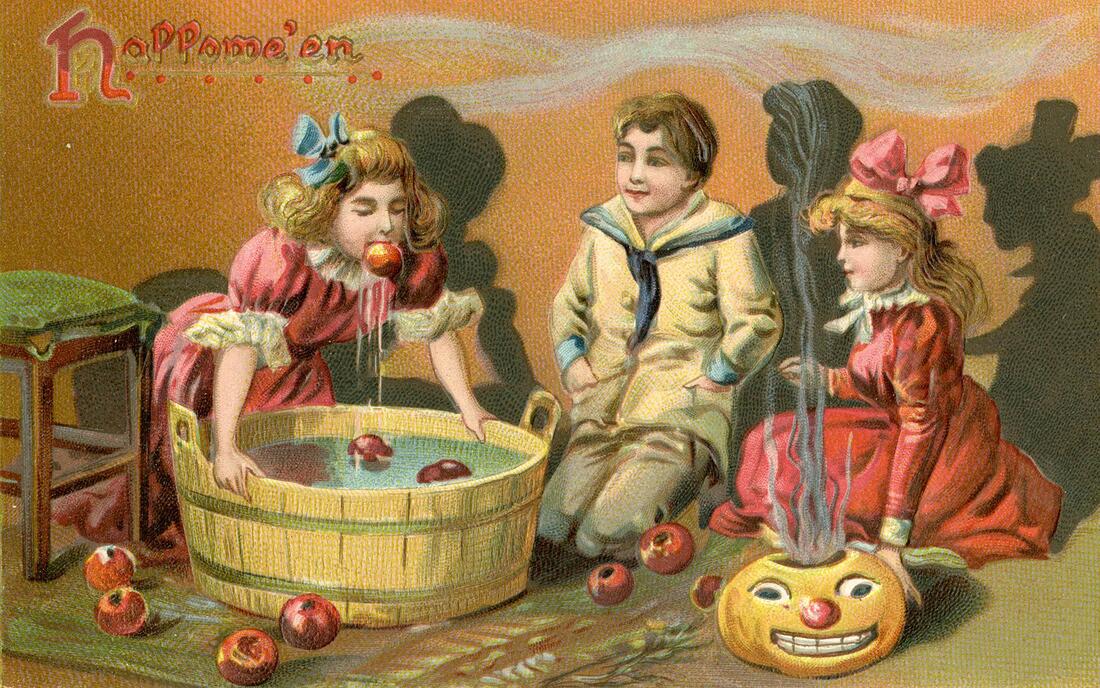 This undated postcard, likely from the turn of the 20th century, features two girls and a boy bobbing for apples. It's one of the few images of the period showing a girl actually doing the bobbing while the other two watch. A smoking jack o'lantern typical of the period sits in the foreground. Toronto Public Library collection. Apple Divination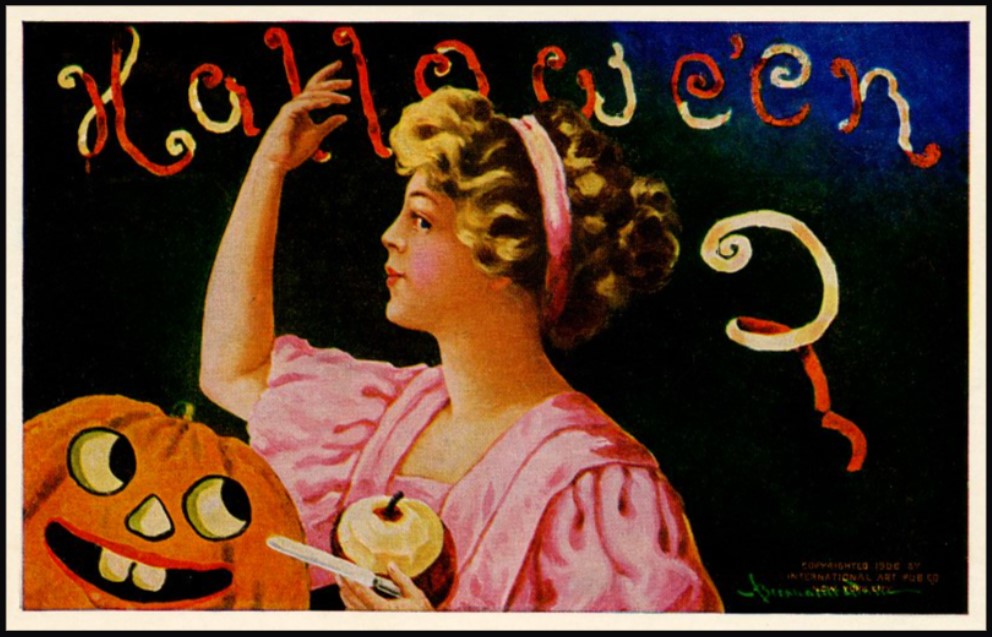 In this 1909 Halloween postcard by illustrator Bernhardt Wall, a young woman is tossing a long apple peel over her shoulder, believing that the peel will fall to the floor in the shape of a letter that will reveal the first letter of her future husband's name. Posted by collector Alan Mays to Flickr. Like May Day and Midsummer, Halloween was chock full of divination opportunities, and apples were at the center of several. The more famous is apple peel divination. A young girl would peel an apple in a long strand - sources vary over whether she had to do the whole apple in one unbroken peel - and toss the peel over her shoulder. Supposedly, the peel would land in the shape of the initial of the man she was to marry. In practice it seems like there would be a lot of S's, C's, L's, and O's, and not too many T's or H's. Another romantic divination game involved the apple seeds. Pressing fresh seeds to your forehead you would assign to each one a crush or romantic interest. The one that stayed on the longest was destined to be yours. Still other apple seed games involved squeezing them in your fingers. The direction they shot out of your fingers was where your true love would approach from. Candy and Caramel Apple HistoryAlthough apples were consumed regularly in the autumn months in northern climes all over the world, it wasn't until the late 19th century that the modern apple as we know it today developed. Starting post-Civil War, fruit orchardists like the Stark Brothers and agricultural college experimental stations began developing specific varieties of fruit, grafted for taste, disease resistance, ripening time, etc. With these scientific developments came the emergence of the modern dessert apple. Designed for eating, rather than for producing cider, these apples were sweeter than their predecessors. Apples, through improvements in orchard husbandry, were also getting larger, more standardized, and shipped better. People in cities were able to access fresh apples on an increasing basis. Which led to innovations in eating. Candying fruits in sugar or honey syrup is ancient. But the idea of dipping fresh apples in a candy coating was relatively new. Candy apples are coated in a shiny red candy glaze, whereas caramel apples are dipped in sticky brown caramel. Taffy apples are somewhere in between. Toffee apples, as they are called in England, are similar to both. Although candy apples are widely attributed to William Kolb of New Jersey in 1908, but toffee apples and caramel apples have newspaper references in England and France in the 1890s. Also in 1908, one newspaper article for "Caramel Apples" went viral - appearing in 62 newspapers across the country. It is not quite the same as the caramel apples we associate with today, which are more similar to British toffee apples of a sour apple dipped in soft caramel. These were more like a combination of the medieval candied apples and modern caramel apples, with nary a stick in sight. Here's the article in its entirety: CARAMEL APPLES ARE GOOD. As you can see from the recipe, these apples must have been incredibly sweet as they were both cooked in syrup and then also covered in caramel and more syrup and served with whipped cream. No wonder the sugar addicts of 1908 made this recipe go viral! Caramel and candy apple associations with Halloween come a bit later, coinciding with the apple harvest season. Most Americans connect them to county fairs and old-fashioned trick-or-treating, when people still made homemade treats to distribute before the candy scares of the 1970s. Today, they're found everywhere from pick-your-own apple orchards to places like Coldstone Creamery, although most are now dipped in chocolate, rather than caramel or candy, as getting a candied coating that is thick enough to stick and soft enough not to break your teeth is a bit of a lost art. Chocolate is far easier to handle. Apple Cider For Halloween MenusAlthough the Pumpkin Spice latte may have taken over fall in today's world, in my opinion apple cider is a much better companion. And historic cooks and party planners agreed. Apple cider was often featured in Halloween menus like the ones above from the late Victorian period on. This would have been sweet cider, of course, because even before Prohibition most home economists and domestic scientists were advocates of the Temperance movement. Whether served cold or spiced, cider was often associated with other more casual foods like doughnuts, popcorn, frankfurters (aka hotdogs), pickles, and nuts. Outdoor events like bonfires, hay rides, and outdoor parties along with public events where children or teenagers were present were also commonly associated with simpler foods like outlined in the menus above. The prevalence of cider reveals its more industrial origins. Apple orchards growing dessert apples were more prevalent, as older heirloom cider apples fell out of use. Commercial bottling in the mid-19th century allowed companies like Martinelli's to produce hard cider and sodas. The growing popularity of the Temperance movement shifted companies away from hard cider and toward unfermented sweet cider, which remains the focus of Martinelli's today. Companies like Mott's also started out making hard cider, and then shifted to sweet in the 20th century as bottling sanitation improved and the demand for non-alcoholic beverages increased. Today, most commercially-sold apple juice is filtered and pasteurized, making for a thinner-bodied, sweeter, and less acidic product. Apple cider is generally not filtered and is sometimes sold unpasteurized, as the acidity level gives it anti-microbial properties. This, along with the sugar content, is generally also what allows apple cider to ferment, rather than spoil. Today, most hard cider is inoculated with champagne yeast, but historically wild yeast would naturally gather in the sugary liquid. Sweet cider is available most places where apples are grown, and New York is the second-largest apple-producing state in the country, so I'm lucky to have ample access to it. I've even made my own with a historic cider press! (Just a small, household sized one, not one of the giant presses.) In all, apples take the cake (sometimes literally) in Halloween eats in large part because they were a readily available source of sugar a time when refined cane sugar was largely the purview of the wealthy. And besides which, although pumpkin pie was also associated with Halloween, there's only so much of it you can eat before you get sick of it. Apples - whether candied and carameled or turned into pie, salads, cakes, muffins, crisps, dumplings, sauce, butter, cider, or even candy - are tough to get sick of, especially after a long, hot summer. What do you thing - do apples beat out pumpkins for ideal Halloween eats? Or should we be celebrating other fruits altogether, like pears or blackberries? Edwardian HalloweenAs I was working on this post, I was watching BBC's Edwardian Farm (which is also available on Amazon Prime - using the link helps support The Food Historian). Episode 2 is great to watch in its entirety (lime burning, apple cider pressing, and egg preservation, oh my!), but I've started the YouTube video below at the beginning of the Halloween party, where you'll see a variation of snap apple, an apple divination game involving sticking apple seeds to your forehead, and of course, fermented apple cider. Enjoy, and have a happy, apple-ish Halloween! The Food Historian blog is supported by patrons on Patreon! Patrons help keep blog posts like this one free and available to the public. Join us for awesome members-only content like free digitized cookbooks from my personal collection, e-newsletter, and even snail mail from time to time! Don't like Patreon? Leave a tip!
0 Comments
Welcome to The Food Historian's 31 Days of Halloween extravaganza. Between social media (Facebook, Instagram, Twitter) and this blog, I'll be sharing vintage Halloween content nearly every day this month! 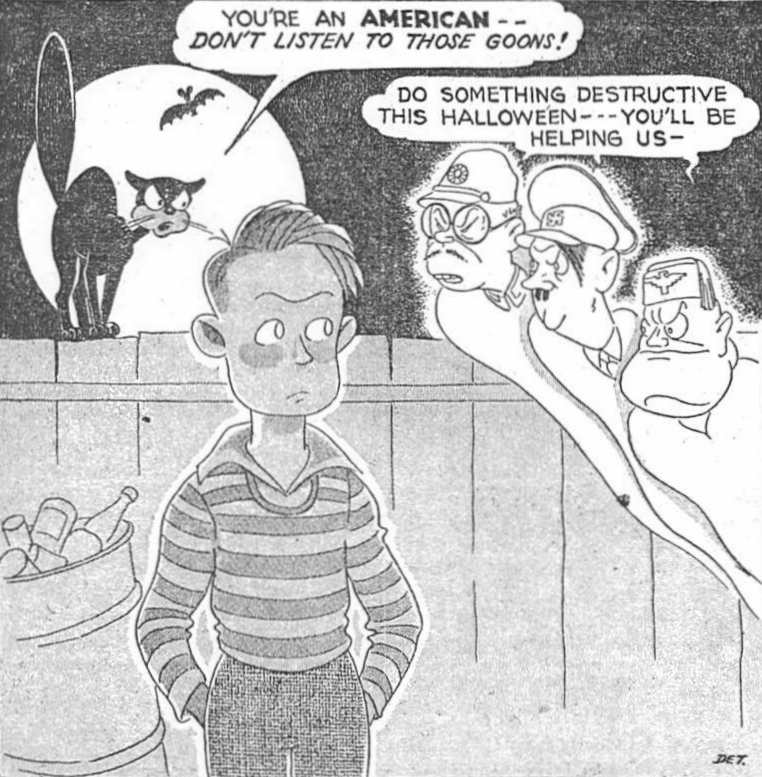 Cartoon published in the "San Diego Union," October 25, 1942. Ghosts of Emperor Hirohito of Japan, Adolph Hitler of Germany, and Benito Mussolini say in unison, "Do something destructive this Halloween - you'll be helping us -" to a teenaged boy in an alley. A black cat on the fence behind him says, "You're an AMERICAN - don't listen to those goons!" Trick or treating today is usually about young children, costumes, and lots of candy. In many communities, it's over by 8 or 9 pm. But historically, trick or treating was more about the tricks than the treats. Going door to door threatening tricks if treats were not offered instead is very old, but has deeper roots in association with Christmas than with Halloween. Despite the tradition's age, going door to door for treats on Halloween was not widely practiced in the United States until the 20th century. The pranks, however, were popular among teenaged boys. From the relatively harmless pranks like soaping car windows and placing furniture on porch roofs to the destructive ones like slashing tires, breaking windows, egging houses, and starting fires in the streets, pranks were common in communities across the country. The war changed all that. Halloween, 1942 was the first since the United States entered the war in December, 1941. Across the nation, newspapers published warnings to would-be prankers that destructive acts of the past would no longer be tolerated. This one, published on October 30, 1942 in The Corning Daily Observer in Corning, California, was typical of other messages other newspapers: "Hallowe'en Pranks Are Out For the Duration" "The destructive Hallowe'en pranks of breaking fences, stealing gates, deflating auto tires, ringing door bells to disturb sleepers, soaping windows, and all other forms of the removal or destruction of buildings or property are definitely out and forbidden on Hallowe'en night, according to word from Corning city officials. "Supplies are needed for national defense and are too scarce to permit misuse. "Word comes from Washington that individuals committing such offense shall be prosecuted as saboteurs and be treated accordingly. "Corning officials state that there will be no fooling about this matter this year and anyone contemplating 'having fun' will be treated with severely." The newspaper cartoon above, published in the San Francisco Union on October 25, 1942, illustrates just this sentiment. In it, the ghosts of Japanese Emperor Hirohito, German Chancellor Adolph Hitler, and Italian fascist Prime Minister Benito Mussolini egg on a young boy hanging out in a dark back alleyway. "Do something destructive this Halloween - - - You'll be helping us - " they tell him. On the high fence behind the boy stands a black cat, back arched in anger, silhouetted by a full moon. He says to the boy, "You're an American - - Don't listen to those goons!" Conflating Halloween pranks with sabotage and aiding the Axis powers was no joke. The November, 1942 newspapers feature stories of pranksters waking sleeping war workers, scaring their neighbors by setting off air raid bells, and causing car accidents by leaving debris in the roads. Several ended up in court, and some got buckshot wounds from angry homeowners for their efforts. Wartime propaganda like this was common - caricatures of the Axis leaders showed up frequently in newspapers, cartoons, and propaganda posters. For Halloween, they made convenient bogeymen. World War II was the beginning of the end of Halloween tricks. Although more innocuous pranks like egging houses and cars and toilet-papering trees and porches continued to be hallmarks of Halloween mischief, the days of fires in the streets, broken windows, and other real crimes were largely in the past. Communities that had previously celebrated Halloween with private parties at home, shifted to more public events like parades, community dances, and trick-or-treating geared toward small children getting treats rather than teenagers engaging in tricks. Further Reading If you'd like to learn more about Halloween during World War II, check out these additional resources:
The Food Historian blog is supported by patrons on Patreon! Patrons help keep blog posts like this one free and available to the public. Join us for awesome members-only content like free digitized cookbooks from my personal collection, e-newsletter, and even snail mail from time to time! Don't like Patreon? Leave a tip! Welcome to The Food Historian's 31 Days of Halloween extravaganza. Between social media (Facebook, Instagram, Twitter) and this blog, I'll be sharing vintage Halloween content nearly every day this month! Home Halloween parties were extremely popular during the first decades of the 20th century, and although the First World War did slow some of the celebrations, it didn't entirely stop them. On October 28, 1917, the Poughkeepsie Eagle published a full-page spread celebrating Halloween. In it, "Hints for the Hallowe'en Lunch" outlined just how locals could celebrate even with voluntary restrictions on meat, butter, white flour, and sugar. The "Jack-o'-Lantern Salad" features inexpensive salt herring and potatoes, the loaf cake features just one cup of wheat flour with brown sugar and raisins for sweetener, and the "Priscilla Pop Corn" sounds very much like caramel corn! This lunch was likely intended for adult women rather than children, though young women may also have been the intended audience. A composed vegetable salad with sandwiches was typical fare for club women and other ladies who lunched. I've transcribed the whole article below for your reading pleasure. Hints for the Hallowe'en Lunch"Table decorations for a Jack'o'Lantern Jubilee must necessarily include pumpkins big and pumpkins little. Both kinds are introduced into the attractive witches cauldron of the illustration. Its value is increased when an assortment of prophecies is put into the kettle to be distributed to the guests when the strong black coffee is served. "Hallowe'en menus usually include the homely cider and doughnuts, chestnuts and apples which belong to other harvest home celebrations. "The following menu is plain and substantial and just a little different. "Jack-o'-Lantern Menu Jack-o'-Lantern Salad Brown Bread Sandwiches Fruit Loaf Cake Priscilla Pop Corn Cider or Coffee "Jack-o'-Lantern Salad "Soak salt herring in lukewarm water and drain. Cook in boiling water for fifteen minutes. When cool, separate into flakes and add an equal quantity of cold boiled potato, and one-fourth quantity of chopped, hard-boiled eggs. Mix with French dressing [ed. note: vinaigrette] and chill in refrigerator until serving time. Beat one-fourth cupful of cream until stiff and mix with it two tablespoons chopped pimentos. Mix with equal portion of mayonnaise dressing and combine with the salad. Serve on lettuce leaves, slightly flattening the heap on top to receive the "Jack-o'-Lantern," which is a small full moon face cut from a very thin slice of American cheese, the eyes marked with bits of clove, and the nose and mouth by thing strips of pimento. Brown bread sandwiches, with a filling of chopped peanuts is served with this salad. "Raised Fruit Loaf. "One cupful of butter, two cupsful brown sugar, two eggs, two cupsful of bread sponge, two teaspoonsful cinnamon, one teaspoonful clove, two teaspoonsful soda, one teasponful salt, two cupsful raisins, one cupful flour. "Cream butter and add slowly, while beating constantly sugar, then add well-beaten eggs, bread sponge, spice, soda and salt, and flour mixed and sifted, and raisins, cut in half and dredged with flour. Turn into buttered and floured oblong pans and let rise two and one-half hours and then bake for an hour. "Priscilla Popped Corn. "Two quarts of popped corn, two tablespoonsful butter, two cupsful browned sugar, one-half cupful water, one-half teaspoonful salt. Put butter in saucepan, and when melted add sugar, salt and water. Boil sixteen minutes and pour over popped corn, coating each grain thoroughly." What do you think? Would you like to attend such a lunch? I know I would! Even the herring potato salad sounds good and distinctly Scandinavian, although not particularly Halloween-ish. Priscilla popcorn, however, is definitely going on the to-make list! The Food Historian blog is supported by patrons on Patreon! Patrons help keep blog posts like this one free and available to the public. Join us for awesome members-only content like free digitized cookbooks from my personal collection, e-newsletter, and even snail mail from time to time! Don't like Patreon? Leave a tip! Welcome to The Food Historian's 31 Days of Halloween extravaganza. Between social media (Facebook, Instagram, Twitter) and this blog, I'll be sharing vintage Halloween content nearly every day this month! We're revisiting the October, 1917 issue of the Ladies' Home Journal this week with some very fall-ish recipes. The beautiful color plate featured in the magazine contains a number of recipes for baked goods using wheat substitute flours. Refined white flour was a shelf stable product necessary for the war effort to feed both American troops and our French, British, and Belgian allies. But the 1916 wheat harvest was poor throughout the Americas, and the United States joined the war in April, 1917 - too late to increase wheat crops for the year. Herbert Hoover, United States Food Administrator, asked Americans to voluntarily reduce their consumption of wheat (along with meat, fats, and sugar). This page of helpful recipes bears Hoover's portrait and purportedly a quote from him as well, reading "Every woman who serves in her home these good things to eat will, in just that degree, by conserving wheat flour, help win the war." Not the snappiest quote from Hoover, but the emphasis on using wheat substitutes, especially corn, were popular at the time. Although rationing was voluntary, not mandatory, many Americans tried to make their baking more patriotic and reduce their reliance on refined white flour. Because this is from 1917, we don't have mandatory sugar rationing, as we see by the fall of 1918. But cornmeal, rice, rye flour, graham flour (today sometimes called entire wheat flour - made from whole wheat berries and different from modern whole wheat flour, which is white flour with some wheat germ added back in), oatmeal and oat flour, and barley flour were all used to help reduce the reliance on white flour. Of them all, cornmeal and rice were the most plentiful. In the Halloween spirit, I've transcribed two of the most festive recipes on the list - the unimaginatively named "Corn Muffin Dessert with Spiced Apples" and "Pumpkin Biscuits." Enjoy these seasonal treats! Corn Muffin Dessert with Spiced ApplesCut four medium-size apples into eighths, and core but do not pare them. Divide each eighth crosswise into four pieces. Place one teaspoonful of whole cloves and half a stick of cinnamon in three-quarters of a cupful of vinegar and boil for five minutes. Then add one cupful and a half of sugar and half of the apples and continue boiling. When the apples are tender remove with a skimmer and cook the other half. Remove when done and boil down the liquid into a heavy sirup. Pour this over the apples and cool. Make eight large-size corn muffins by any standard recipe, slightly increasing the amount of sugar. When they come from the oven, cut a circular "lid" from the top of each and scoop out the interior with a teaspoon (the rejected portion can be dried for crumbs, or utilized in bread pudding). Fill with the spiced apples and sirup and place the lids on top. Serve immediately. My translation of the recipe: 4 apples 3/4 cup cider vinegar 1 teaspoon whole cloves half stick cinnamon 1 1/2 cup sugar 8 corn muffins (homemade or store bought) Cut the apples into quarters and then again in half to form eighths. Core, but leave skin on. Cut crosswise into thick slices. Bring the vinegar and spices to a boil and let boil for five minutes. Then add sugar, stirring well to dissolve. Add half the apples and cook until apples are tender (can be easily pierced with a fork or sharp knife). Remove to a dish with a slotted spoon, then add the remaining apples and cook until tender. Remove to dish and continue cooking spiced vinegar syrup until it is thick. Pour over apples and let cool. Cut tops from muffins and use spoon to carefully hollow out, leaving at least an inch of muffin on all sides. When apples are cool, spoon into muffin cases. Serve cold for dessert. Pumpkin BiscuitsPut into a bowl one cupful and a half of cooked pumpkin; add four tablespoons of sugar, one teaspoonful of salt, a quart of a cupful of butter substitute melted, half a cupful of lukewarm milk, half a yeast cake dissolved in a quarter of a cupful of lukewarm water, five cupfuls of whole-wheat flour and two cupfuls of white flour. Let rise; put together in thin biscuits, with butter substitute in between; brush over with milk; when risen, bake in hot oven. An here's my modern translation: 1 1/2 cups pureed pumpkin (or 1 can) 4 tablespoons sugar 1 teaspoon salt 1/4 cup (half a stick) butter or margarine, melted 1/2 cup milk, warmed 1/2 teaspoon active dry yeast 1/4 cup lukewarm water 5 cups whole wheat flour 2 cups white flour. Mix pumpkin, sugar, salt, melted butter, and milk. In a separate bowl bloom yeast in warm water - if it foams it is ready to use. Add to pumpkin mix, then add flour gradually (start with white flour). Knead well. Cover and let rise in a warm place. When doubled in bulk, punch down and roll out thin. Cut into rounds with biscuit cutter. Spread one round with softened butter or margarine, then stick another round on top. Brush top round with milk. Preheat oven to 425 F. Let rise again, then bake in hot oven, 12-15 minutes or until golden brown. What do you think? Would you try either of these recipes? The Food Historian blog is supported by patrons on Patreon! Patrons help keep blog posts like this one free and available to the public. Join us for awesome members-only content like free digitized cookbooks from my personal collection, e-newsletter, and even snail mail from time to time! Don't like Patreon? Leave a tip! Welcome to The Food Historian's 31 Days of Halloween extravaganza. Between social media (Facebook, Instagram, Twitter) and this blog, I'll be sharing vintage Halloween content nearly every day this month! If you're a fan of Halloween and all things vintage, you've probably heard of Dennison's Bogie Books. Launched in 1909 by the Dennison paper products company, which specialized in crepe paper, the Bogie Books became hugely popular for their ideas for parties, costumes, and yes, menus. The idea of direct-to-consumer advertising was starting to take off in the 1900s, and certainly food companies were capitalizing on corporate cookbooklets at this time. But Dennison's was one of the first companies to issue what they called "instruction books," but which were more like idea books. Chock full of ideas for table crafts, games, costumes, decorating, party organizing, and menus, they were a one-stop shop for all things Halloween. Nearly all the ideas incorporated Dennison's products, which branched out from just black and orange crepe paper to more elaborate decorations, like printed paper tablecloths and napkins, paper plates, printed crepe paper "borders," die cut figures, and more. The popularity of Halloween parties exploded in the 1920s. Long popular among young adults looking for romance, postwar they shifted to include children and adults, too. Dennison's had been printing Art and Decoration in Crepe and Tissue Paper since 1894 (here's the 1917 edition, complete with colorful samples of crepe and tissue paper). But the 1909 Bogie Book was one of its first forays into a single holiday booklet, although others for Christmas, galas, and other holidays would follow in the 1920s. The Bogie Book, however, was the only one to be printed annually, and illustrates just how popular Halloween had become in the United States. Halloween DecorationsDennison's bread and butter was paper decorations and colored crepe paper. More than any other holiday except perhaps Christmas, decorations were an integral part of Halloween celebrations. Popularized in the late Victorian era, home Halloween parties were increasingly common in the 1910s and 1920s. Dressing up your living room (like below) and other more mundane parts of the house was crucial, and Dennison's promised loads of ideas for themes and instructions for making your own decorations, in addition to purchasing their ready-made stock. Halloween PartiesIn addition to parties at home, increasingly people were throwing more public parties. Halloween was traditionally a time for young love, and it was the perfect opportunity to get young people together. Public parties could be held in church basements, public halls, fraternal organizations, and schools. Bogie Books included hints not only in decorating these larger spaces, but also advice for spooky entrances, harmless tricks, and group games. Halloween CostumesOf course, what was a party without a costume? But Halloween costumes in the 1910s and 1920s were not much like today's. Although classic Halloween archetypes like witches, bats, pirates, pierrot and harlequin figures, and fortune tellers were popular for more obvious costumes, simply dressing in black and orange with spooky figures or motifs was enough for most people. The silhouettes of the day were largely maintained. Sometimes more abstract themes, like "Night" or "The Moon" or "A Star" might allow the fashionable young lady to put in a little more effort while still feeling pretty. In the above image, three young women feature variations on the same 1920s party dress silhouette - one is festooned with orange stripes and ribbons of crepe paper hang from her waist and festoon a hat, with jack-o'-lantern images bobbing at the ends of the streamers. Another is dressed as "The Moon" - with a large silver crescent moon on her head and a black dress and gray cape spangled with more crescent moons and stars - orange streamers hang from her waist. Another goes with a pumpkin theme - wearing an orange bodice with a dagged peplum, a black dress featuring orange jack-o'-lanterns, and long black sleeves with dagged cuffs and black ribbed cape with capelet and a huge stiff collar. Her ensemble is topped with a black cap featuring a festoon of orange leaves. A little girl is also pictured, wearing a black and orange dress featuring a black cat's face on the bodice and a black and orange cap with long ears or leaves protruding from the top. Alas, the men's costumes are less flattering - large, formless tunics and hats worn over their regular button-up shirts and ties. One is dressed as the moon - with the tunic featuring an enigmatic-looking full man-in-the-moon and a tall cone of a cap with another moon and stars. The other is dressed in a black-trimmed orange tunic featuring a large fringed black-and-orange collar and a smiling jack-o'-lantern as a pocket. He wears a witch's hat covered in small jack-'o-lanterns. Each Dennison's Bogie Book included instructions for making each of the pictured costumes from Dennison's crepe paper, printed paper figures, and more. Halloween MenusOf course, The Food Historian is going to be interested in the menus! Along with all their other suggestions, some issues of Dennison's included sample menus. Although not every Bogie Book contains menus, many do reference food and refreshments. Generally, the suggestions are simple and standard party fare - sandwiches, potato chips, potato salad, simple cakes, donuts, fruit, olives, cheese, nuts, etc. - and rarely are recipes included. The emphasis of the books is on decorating the food, tableware, and tables than the food itself. It took a while for the books to gain traction, and the 1909 one didn't get a sequel until 1912. But by then home parties for Halloween were becoming increasingly popular. And Dennison published Bogie Books annually from 1912-1935. Only war (1918) and the Great Depression (1932) stopped their publication. History of the Dennison Manufacturing CompanyThe Dennison Manufacturing Company has a long and interesting history, as it was largely controlled by one family for nearly 100 years. The Dennison company is still around today as Avery-Dennison. From the Hollis Archives, Harvard University, which holds the Dennison corporate collection: "The Dennison Manufacturing Company was a manufacturer of consumer paper products such as tags, labels, wrapping paper, crepe paper and greeting cards. The company was founded by Aaron L. Dennison and his father Andrew Dennison in Brunswick, Maine in 1844. Aaron Dennison, who was working in the Boston in the jewelry business, believed he could produce a better paper box than the imported boxes then on the market. The Dennison's first produced boxes made to house jewelry and watches. Aaron Dennison sold the boxes at his store in Boston, beginning in 1850 and in New York starting in 1854. After early business success, Aaron Dennison retired and yielded control of the company to his brother E.W. Dennison. "The mid to late 19th century saw numerous products introduced by E. W. Dennison, who improved the product so that it became the best and most sought after on the market and under the Dennison name. In order to grow the business, Dennison needed to mechanize the box making process. Dennison introduced the box machine to meet the growing demand of jewelers and watch makers, who began ordering large numbers of boxes. Until the introduction of the box machine, the boxes were still being made one at a time, by hand. The machine mechanized and sped up the box-making process. The company continued to expand, and a larger, centrally located factory was needed. Dennison chose Boston, Mass., as the site of the new factory in order to be close to the city's retail store. "In 1854, Dennison introduced card stock to hold jewelry and jewelry tags. Dennison's tags became wildly popular and the business began to expand rapidly, from the jewelry industry to textile manufacturers and retail merchants. E.W. Dennison noticed a deficiency in the quality of shipping tags and patented a paper washer that reinforced the hole in the tag. Sales of tags hit ten million in the first year. Stationery gummed labels were introduced just after the end of the Civil War. These labels had an adhesive on the back side and were manufactured to stick on boxes, crates or bags. The tag business alone required E.W. Dennison to move his factory in order to fulfill demand. The boxes, shipping tags, merchandise tags, labels and jeweler's cards were moved to the new factory in Roxbury in 1878. That same year the company was officially incorporated as the Dennison Manufacturing Company. "In just over thirty years, the company grew from a small jewelry box maker to a large manufacturer of paper products under the direction of E.W. Dennison and his partner and treasurer Albert Metcalf. Dennison died in 1886 and his son, Henry B. Dennison succeeded him as president of the company. Henry B. Dennison had worked for the company for many years, having opened the Chicago store in 1868 and served as superintendent of the factories since 1869. Henry B. Dennison served as president of the company for only six years and resigned due to poor health in 1892. Henry K. Dyer was then elected president, and under his direction the company consolidated its many factories and operations. In 1897, the Dennison Manufacturing Company purchased the Para Rubber Company plant located on the railroad line in Framingham, Mass. The box division was transferred from Brunswick, Maine; the wax and crepe paper operations from the Brooklyn, NY factory; and the labels and tags from the Roxbury plant. The move was complete in 1898 and the factory was up and running. The factory was divided into five manufacturing divisions: first, the jewelry line, which included boxes, cases, display trays; second, the consumers' line of shipping tags, gummed labels, baggage check and specialty paper items; third, the dealers' line which included all stock products sold to dealers and some consumers; fourth, the crepe paper line; and fifth, the holiday line. Also located at the Framingham plant were financial offices, advertising and marketing departments, sales division and director's offices. Although the company was divided into divisions, all aspects of the company worked together in unison to plan and execute the production, marketing, and sale of a product. The Dennison Mfg. Co. planned well in advance of any sale by conducting market research, reviewing past statistics and gauging future interest in products. "Henry Sturgis Dennison, grandson of the founder, began working for the family business after graduating from Harvard in 1899. He held various jobs at the company including foreman of the wax department and in the factory office. He was promoted to works-manager in 1906, director in 1909 and treasurer in 1912. In 1917, H.S. Dennison was elected president of the company. While serving as president of the company, H.S. Dennison oversaw the international expansion of the firm, consolidation and streamlining of certain processes and procedures, reduction in working hours, implementation of employee profit sharing plans, an unemployment fund and the creation of company wellness facilities. H.S. Dennison was heavily focused on getting the highest quality work out of each of his employees and eagerly sought their advice and suggestions for improving working conditions and manufacturing processes. He employed market analysis and research when venturing into a new sales territory or rolling out a new product. His focus on industrial management led him to be a prolific writer, speaker, and expert advisor on the topic. Outside of his management of the company, he served as an advisor to the administrations of Woodrow Wilson and Franklin Roosevelt and lectured at Harvard Business School. Henry Sturgis Dennison served as president of the Dennison Manufacturing Company until his death in 1952. "Dennison's long time director of research and vice president, John S. Keir, was elected to succeed him in 1952. Keir only served for a short time, and continued running the company the way Dennison would have. After World War II, an emphasis was placed on manufacturing products that appealed to women, especially housewives. New products included photo corners, picture hangers, stationery, scotch tape, diaper liners and school supply materials for children. During the 1960s and 1970s, the Dennison Manufacturing Company began actively researching new products and proposed acquiring small, competing office product companies with new technologies. This effort was undertaken by president Nelson S. Gifford in order to diversify Dennison's product line, maximize profits for shareholders, and keep the company fresh. In 1975, Dennison acquired the Carter's Ink Company, a Boston, Mass. based manufacturer of ink and writing utensils. This acquisition and others broadened Dennison's product line as the company moved away from paper manufacture to a manufacturer of all office products. "Dennison Manufacturing Company merged with Avery Products in 1990 to become, Avery-Dennison, a global manufacturer of pressure sensitive adhesive labels and packaging materials solutions." If you'd like to learn more about Dennison, check out the Harvard collection. For more about the history of the family and its products, check out this historical overview from the Framingham, Massachusetts History Center, which holds the Dennison family papers and other collections related to the company. Finding Dennison's Bogie BooksThe Bogie Books can be hard to find these days. They are collector's items and sadly often disappear from library and archival collections. However, several issues from the 1920s have been digitized and are available for free on disparate locations around the internet. I've collected them here for your viewing and reading pleasure. If you'd like to see the covers for 1912-1925, check out the list at Vintage Halloween Collector. Dennison's Bogie Book - 1919 edition Dennison's Bogie Book - 1920 edition Dennison's Bogie Book - 1922 edition Dennison's Bogie Book - 1923 edition Dennison's Bogie Book - 1924 edition Dennison's Bogie Book - 1925 edition Dennison's Bogie Book - 1926 edition Dennison's has also reproduced many of its historic Bogie Books and they are available for sale as print copies. You can find them on Amazon by clicking the links below. If you purchase anything from the links, you'll help support The Food Historian! What do you think? Are you inspired to try some vintage decorations for your Halloween party this year? In 2019 I threw my own version of A Very Vintage Halloween party - check it out! The Food Historian blog is supported by patrons on Patreon! Patrons help keep blog posts like this one free and available to the public. Join us for awesome members-only content like free digitized cookbooks from my personal collection, e-newsletter, and even snail mail from time to time! Don't like Patreon? Leave a tip! Welcome to The Food Historian's 31 Days of Halloween extravaganza. Between social media (Facebook, Instagram, Twitter) and this blog, I'll be sharing vintage Halloween content nearly every day this month! Pop culture these days seems dominated by arguments over whether or not the pumpkin spice latte (or PSL) is "basic" or not, whether or not enjoying pumpkin spice flavored things can only happen during the few short months of autumn, and whether "fall creep" plays a role in "ruining" some people's summers. But have you ever wondered WHY we eat pumpkin pie spice - and other sweet spices - mostly in the fall? Pumpkin pie spice is a mixture of sweet spices - cinnamon, nutmeg, ginger, and either cloves and/or allspice. With the exception of allspice, all of these spices are native to Southeast Asia, especially the so-called "Spice Islands," more commonly known as the Maluku Islands (or Molucca Islands) near Indonesia, where nutmeg trees (which also provide mace) and clove trees originated. Cinnamon is native to Sri Lanka, and ginger is native to Maritime Southeast Asia. Allspice is also a plant of the tropics, native to the Caribbean and Central Mexico. So why do we so strongly associate these flavors with cold fall and winter months in the Northern hemisphere? A Brief History of the Spice Trade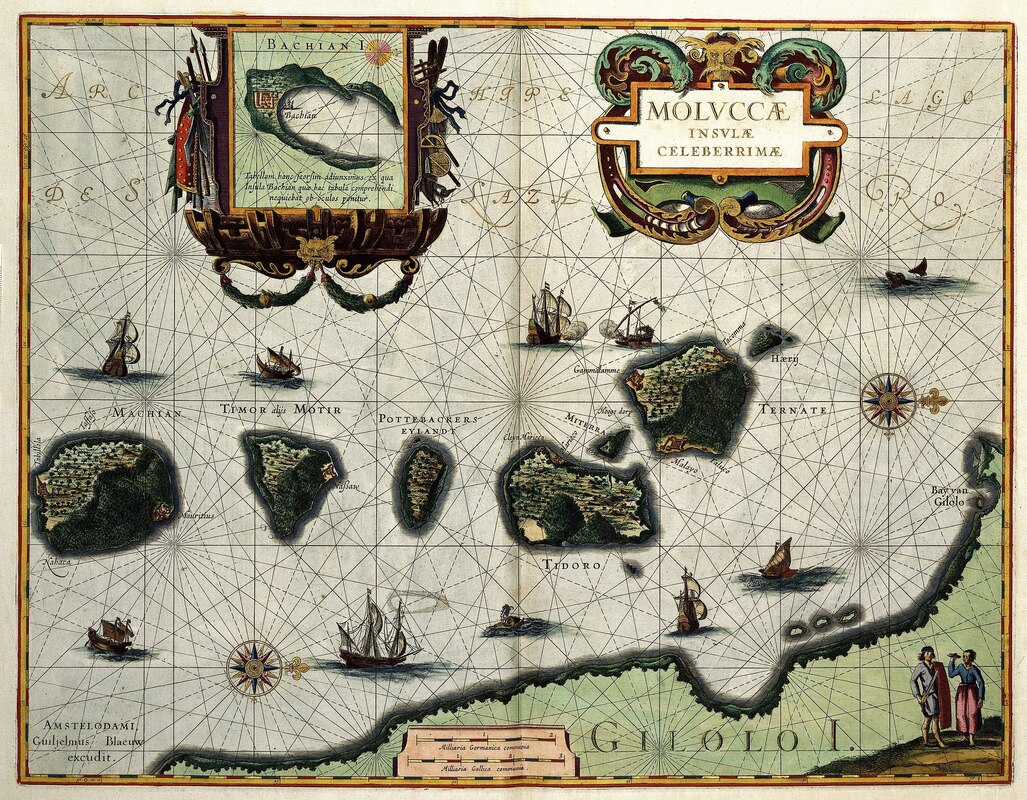 This map of the Moluccas Islands was published in 1630 by Willem Jansz. Blaeu (1571-1638). This map clearly shows that very little was known at the time about the Indonesian Archipel. The map shows the islands close together though in reality they are often thousands of miles apart. From the collections of the Koninklijke Bibliotheek. As with many things, it all has to do with money. Prior to the 16th century, all of these spices were available in Europe traveling via trade routes across Asia. Chinese and Arab traders traveled overland via the Silk Road or on ships from the Red Sea across the Indian Ocean. Cinnamon, ginger, and black pepper (native to the Malabar coast of India) were all known in Europe as far back as Ancient Rome. For centuries, Venice controlled much of the flow of spices into Europe, and the wealth gained by the spice trade may have helped spark the Renaissance. But when the Ottoman Empire wrested control of the spice trade from Europeans in 1453, things changed. European nations, spurred by improvements in naval technology, started to search for their own routes to control the lucrative spice trade. Indeed, most of the European "explorers" who ended up in the Americas were searching for a shortcut to Asia and a way to bypass the control of the Muslim Ottoman Empire and cut out the middleman altogether, ensuring massive profits. Instead of dealing with existing trade relationships, as Asian and Arab traders had for centuries, Europeans simply took what they wanted by force. The Dutch were particularly violent as they tried to take control of the Spice Islands through genocide and enslavement. Even after the plants that produced these valuable spices were successfully propagated outside their native habitats, the plantations which grew them commercially were often owned by foreign Europeans and also used enslaved labor to produce the spices more cheaply than ever. Like sugar and chocolate, the plantation economy allowed spices to be produced in massive quantities quite cheaply. The flavors that were once the purview only of wealth European aristocrats were, by the end of the 18th century, much more widely affordable by ordinary people. By the middle of the 19th century, ginger, cinnamon, nutmeg, mace, and cloves (along with sugar and cocoa) were positively common. Which is why foods like gingerbread cake, spice cake, and spiced pumpkin and apple pies became such indelible parts of American food history. But why the association with fall? In European cuisine, the most expensive foods were served around special feast days, like Christmas and Twelfth Night. Fruit cakes were rich in spices, spices flavored custards and puddings, and cookies flavored with ginger, cinnamon, mace, nutmeg, and cloves were all staples of the winter holidays. As spices became less expensive over time, they were used in other applications, but their association with the holidays - and cold weather - continued. In the United States, Americans flavored the prolific native squash with the now-familiar mixture of spices in a smooth custard pie. Pumpkin pie was born. Creating "Pumpkin Pie Spice"The name "pumpkin pie spice" refers to the mix of spices used to flavor pumpkin pies - among other things. Sadly, the mix itself contains no actual pumpkin, which is quite confusing when it is used as a flavoring agent sans pumpkin. Developed to flavor the smooth squash custards in a flaky crust we've all come to associate with Thanksgiving, the mixture of sweet, exotic spices was extremely popular. But as the 19th century turned to the 20th, the idea of hand grinding whole spices in a mortar and pestle was not only time-consuming, it threatened the use of spices altogether. Spice and extract companies like McCormick had been around since the late 19th century, but the 20th century brought a whole host of other companies to the scene, especially post WWII. The spice mix itself was commercialized first during the early 20th century, as spice and flavorings companies brainstormed ways to make baking easier and more economical for customers. Thompson & Taylor spice company was the first to create "ready-mixed pumpkin pie spice." The above advertisement, first published in 1933, features a woman asking an older woman with glasses "Mother - Why is it your pumpkin pies are never failures?" The older woman, who is spooning something into a pie crust, answers, "T&T Pumpkin Pie Spice my dear, makes them perfect every time." The advertisement goes on to read, "Home-made pumpkin pie, perfect in flavor, color and aroma, demands the use of nine different spices. The spices must be exactly proportioned, perfectly blended, and, above all, absolutely fresh. For reasons of economy, most housewives are right in hesitating to buy nine spices just for pumpkin pie. But here is news! Now, for the fist time, you can get the necessary nine spices, ready-mixed for instant use, in one 10c package of T&T Pumpkin Pie Spice - enough for 12 pies." Of course, they don't want to tell you what those nine spices are! But likely it was a mixture of cinnamon, ginger, nutmeg, allspice, and cloves, and perhaps also mace, cardamom, star anise, and black pepper. Two years later, McCormick advertised their own "Pumpkin Pie & Ginger Bread Spice," a blend of "ginger, cinnamon, nutmeg, cloves and other spices." I love that it is advertised as good for both pumpkin pie and gingerbread. Although we often associate gingerbread with Christmas, it was also often served at Halloween and throughout the colder months. As canned pumpkin grew in popularity in the 20th century, other pumpkin desserts were also developed to use the same spice profile, including pumpkin spice cake. Here's the recipe as written in the St. Louis Dispatch. Feel free to substitute shortening (and the margarine!) for butter. Pumpkin Spice Cake 1/2 cup shortening 1 cup sugar 2 eggs 1 cup canned pumpkin 3 teaspoons baking powder 2 cups flour 1 teaspoon cloves 1/2 teaspoon nutmeg 2 teaspoons cinnamon 1/4 teaspoon salt 1/2 cup chopped dates 1/2 cup rich milk METHOD: Cream shortening and sugar, add eggs, one at a time, and beat well, then stir in pumpkin. Sift dry ingredients and add alternately with milk. (If pumpkin is very dry, add more milk.) Stir in dates and bake in a loaf, in a moderate oven, 350 degrees Fahrenheit. To serve, slice thinly and spread with margarine. Delicious for tea. Spiced pumpkin foods were largely relegated to desserts for most of the 20th century - pumpkin bars, cakes, muffins, and cookies were all popular, especially after the Second World War. But we weren't at peak pumpkin spice saturation just yet. Enter, the Pumpkin Spice Latte. The Pumpkin Spice Latte and BeyondFounded in 1971 near Pike Place Market in Seattle, Washington, Starbucks originally started as a whole bean coffee company. But the specialty coffee business caught on in the dot com boom of the 1990s and franchises spread all over the country. In the 1980s, Starbucks had developed the popular holiday eggnog latte. The addition of a peppermint mocha in the early 2000s piqued corporate interest in specialty holiday drinks available for a limited time. They trialed a variety of drinks with focus groups, and the pumpkin spice latte was the surprise favorite. Released in 2003, it became a national phenomenon that only grew with time. Starbucks was not the first to develop a pumpkin spice flavored latte, but they certainly popularized it. Nowadays September and October bring the onset of just about everything pumpkin spice flavored, regardless of the weather conditions where you live. And that's the weird thing about pumpkin spice - today it is totally divorced from its geography and history. Born in the tropics, the product of genocide, enslavement, and greed, and associated for centuries with wealth and holidays, today it represents shorthand for a near-fictional concept of autumn that most Americans don't experience. Even in stereotypical New England, where pumpkin pie spice was arguably born, climate change is making autumn shorter and warmer. I'm all for letting people love what they love, and PSL and pumpkin spice are no different. I love a good spiced pumpkin dessert, don't get me wrong. But for all the fuss about pumpkin spice, I'm an apple cider girl myself. Just don't tell Starbucks or the people who seem to think everything from breakfast cereals to hand soap should be flavored with pumpkin spice. What do you think? Are you a fan of pumpkin spice? Tell me how you really feel in the comments! And if you want to learn more about the history of pumpkin pie, check out my talk "As American As Pumpkin Pie: From Colonial New England to PSL" - available on YouTube. The Food Historian blog is supported by patrons on Patreon! Patrons help keep blog posts like this one free and available to the public. Join us for awesome members-only content like free digitized cookbooks from my personal collection, e-newsletter, and even snail mail from time to time! Don't like Patreon? Leave a tip! Halloween is tomorrow and that quintessentially American holiday is feeling a little less festive this year. Although I did have a very small party last weekend, and I certainly decked the halls with lights, decorations, and lovely Halloweenish dishware like tiny ceramic cauldron bowls, a big ceramic cauldron for punch, and a big white pumpkin soup tureen for sweet potato-tomato soup, the gloss of my favorite holiday had worn a little thin. A year and a half of pandemic without much of a break will do that to a girl! That being said, nothing makes you feel better than a perfect recipe, and this is one of the more perfect ones I've invented. Inspired by a cocktail I made for my wedding (the "Fallen Apple"), this sweet little cocktail is easy to keep as a mocktail, or for grownups to spike. Perfect Halloween CocktailThis recipe can be made individually or as a punch. For the party I made a big cauldron of punch and let people spike as they wanted (or not). It feels VERY vintage and turns a lovely reddish shade thanks to the cranberry juice. A nice accompaniment to the casual Halloween party menu I put together (see below). 1 part sweet apple cider 1 part cranberry juice cocktail 1 part ginger ale 1/4 part alcohol (I like Winter Jack best, but other party-goers used apple pie spiced moonshine, spiced rum, bourbon, and applejack) This basic recipe can be used to make punch (use a quart each of the non-alcoholic stuff and add 1 cup alcohol). If you're doing individual servings, it's about a third of a cup of each of the juices and ginger ale with 1 ounce of alcohol. The drink is very sweet, so if you want to tone down the sugar, try substituting hard apple cider for the sweet cider, unsweetened cranberry juice for the cocktail, and/or a punchier ginger beer for the ginger ale. Casual Halloween Party MenuSadly I did not get any photos of the food from last week's Halloween party! But I thought I would share the menu with you. I've found one of the nicest ways to have a Halloween party that doesn't break the bank or mean hours of work is to select your treats by color instead of fussy things that look like decapitated body parts or ghosties and ghoulies. This is a hallmark of early 20th century parties, too. White, orange, and dark purple/black are usually lovely classic colors. A little green isn't remiss, either. Here's my simple menu from last week's party: Veggies & dip orange peppers, baby carrots, kohlrabi, cucumber, broccoli with ranch dip Fresh fruit red and yellow pears, russet apples, fresh figs, black grapes Cheese & meat tray with crackers sharp white cheddar, blue & cream cheese spread, pimento cheese, smoked mozzarella, BLACK specialty cheese flavored with lemon, sliced pepperoni and salami, Wasa rye crackers, long multigrain crackers, Raincoast raisin and rosemary crisps Mixed nuts in the shell with nutcracker Dark Autumn Salad dark red leaf lettuce, dried cranberries, butter-toasted pecans, homemade balsamic vinaigrette, crumbled feta Cocktail sausages in barbecue sauce Vegan Smoky Sweet Potato Tomato Soup onion, sweet potatoes, tomato paste, tomatoes, smoked paprika, pureed New York Gingerbread with blackberry maple jam and whipped cream The other surprise hits of the evening were the salad (I heated frozen pecans in a little butter in a saucepan - so good!), the cocktail, and my friend Jess' amazing homemade blackberry maple jam with the gingerbread. Sadly we ate almost the whole jar, but I've got six other flavors from her to savor. The seven people who attended had a great time grazing all the yummy things for the SEVEN HOURS we hung out. Lol. Party started at 4 pm and the last guests left at 11 pm. It was nice having a smaller party because I made less food, we were actually able to use real dishes, and we had some great conversations. If you're more ambitious than I was this season, you can always check out my 2019 vintage party, or download last year's Halloween History Packet. 2020 Halloween History Packet
$5.00
This full-color, 16 page PDF packet discusses all things food history and Halloween, including a basic overview of Halloween history, how Halloween has been celebrated in the United States over the decades, vintage and modern recipes, party suggestions, and a bibliography with links to historic digitized Halloween content. Included inside:
This is a digital download. Once you purchase this item, you will receive an email with the digital file. We are getting a little festive on Sunday night, going "trick or treating" in costume to a friend's very well-decorated house. What are your Halloween plans? Whether you're celebrating solo or with family or friends, I hope you have a lovely Halloween! The Food Historian blog is supported by patrons on Patreon! Patrons help keep blog posts like this one free and available to the public. Join us for awesome members-only content like free digitized cookbooks from my personal collection, e-newsletter, and even snail mail from time to time. Don't like Patreon? Join with an annual membership below, or just leave a tip!
Thanks to everyone who joined us for Episode 22 of the Food History Happy Hour! This was a very special Halloween themed episode! We made the early 19th century Stone Fence cocktail, and talked about all sorts of historic Halloween traditions and foods, including the Celtic and Catholic origins of Halloween, Halloween games and divination, including Snap Apple (as illustrated above), donuts, party foods including gingerbread, grapes and grape juice, apples, pumpkins, color themed parties, decorations, including Dennison's Bogie Books, the history of trick-or-treating, and more!
Stone Fence Cocktail (19th Century - 1946)
There's all kinds of versions of this - I was first introduced to the Stone Fence in the Roving Bartender (1946), and of course it's in Jerry Thomas' "How to Make Mixed Drinks" (1862) also has a version, which is largely how it gets popularized in bars across the country. But mixing hard cider with brown liquor dates to much earlier, and the type of brown liquor depends on the region. Both of these recipes call for Whiskey/Bourbon, but I decided to go with spiced rum. Other versions also call for Angostura bitters or cinnamon, which is unnecessary if you use spiced rum, like I did.
You'll note that the Jerry Thomas recipe actually calls for the use of sweet cider, which is unusual. Here's the original recipe:
(209) Stone Fence. (use a large bar glass) 1 wine glass of whickey (bourbon). 2 or 3 small lumps of ice. Fill up the glass with sweet cider.
I like the Bill Kelly recipe from the Roving Bartender a bit better. Here's the original:
Stone Fence. 1 oz. whiskey in a high ball glass Fill with hard cider. And of course, there's my own version! 1 oz. spiced rum Fill with hard cider (I used Strongbow Artisanal Blend) I did not use ice, because I was lazy, but if you don't make sure your hard cider is chilled for the best version. You could also turn this into a sort of flip by heating the hard cider (don't boil unless you want to lose the fizz and the alcohol content) and adding the spiced rum at the last minute. Episode Links
I love Halloween and had a bunch of fun putting this together.
That's all for tonight! I hope everyone has a very Happy Halloween tomorrow and we'll see you in November for the next episode of Food History Happy Hour!
Food History Happy Hour is supported by patrons on Patreon! Join us for awesome members-only content like free digitized cookbooks from my personal collection, e-newsletter, and even snail mail (like the Halloween packet) from time to time!
You may have seen this meme floating around the interwebs lately. You know the familiar, often hard, taffy wrapped in black and orange waxed paper. 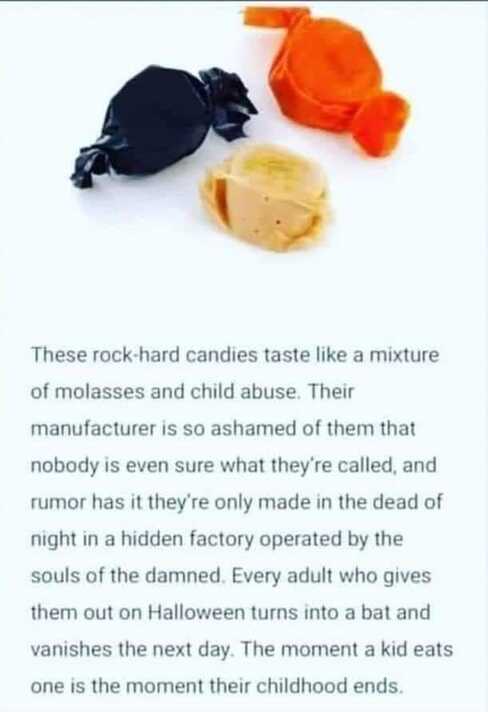 The meme reads "These rock-hard candies taste like a mixture of molasses and child abuse. Their manufacturer is so ashamed of them that nobody is even sure what they're called, and rumor has it they're only made in the dead of night in a hidden factory operated by the souls of the damned. Every adult who gives them out turns into a bat and vanishes the next day. The moment a kid eats one is the moment their childhood ends." Well, I hate to burst the meme-maker's bubble, but these candies DO have a name - Mary Jane Peanut Butter Kisses - and a rather long and storied history. The oft-maligned candies are a molasses taffy stuffed with a bit of peanut butter. And there are two versions, actually - the original Mary Janes, which were rectangular; and the Mary Janes Peanut Butter Kisses - the more familiar, roundish shape that resembles salt water taffy. Originally invented in 1914 by the Charles. N. Miller Candy Company, Mary Janes were supposedly named after his aunt, but the mascot was - and still is - a precocious little girl. Charles H. Miller opened a confectionary shop in Boston, MA in 1884. His son, Charles N. Miller, was the one who invented Mary Janes - a molasses taffy made just at the soft ball stage, with peanut butter folded in the center. Molasses taffy dates back to the mid-19th century. Molasses is boiled until thickened, then when partially cool, it is pulled to incorporate air into the cooked sugar mixture and give it lightness and chew. Mary Janes are softer than many types of taffy, in part because the cooking process is halted earlier. Peanut butter was also being popularized at the turn of the 20th century, and many Halloween candies from that era incorporate peanut butter into the mix. At some point, the small rectangular candies wrapped in an iconic yellow and red printed paper were succeeded by the "kisses" - the rough rounds wrapped in black or orange waxed paper. It's unclear whether the black and orange wrappers were to part of a marketing scheme to associate the candies with Halloween, or if they became associated with Halloween because of the wrappers. Either way, they are a staple old-time candy that still finds its way into candy jars and trick-or-treat bags from time to time. Some of their endurance is likely because they are so inexpensive. Even in the period, they were inexpensive, and one of the advertising slogans the Charles H. Miller Company came up with was, "spend your change on Mary Janes." They're still sold in "penny candy" stores today. Wrapped in waxed paper, both the original Mary Janes and the Peanut Butter Kisses do tend to dry out and harden after a time, which is probably what makes them the bane of childhood. Mary Janes were in danger of disappearing from store shelves on several occasions. In 1989, Miller's was sold to Stark's Candy Company, which in turn was acquired by Necco (New England Candy Company) in 1990. Throughout the mid-2000s, Necco underwent a series of sales to various investment firms until it finally declared bankruptcy in 2018. It was purchased by the Spangler Candy Company (famous for Dum-Dums, candy canes, and Circus Peanuts) and the rights to produce Mary Janes was licensed to the Atkinson's Candy Company in 2019. Located in Texas, Atkinson's is most famous for "Chick-o-Stick" candy, and makes a variety of other, old-fashioned, peanut-butter-based and taffy candies including Peanut Butter Bars (a type of peanut brittle layered with peanut butter which I adore) and Slo Poke. The history of Mary Janes reads like a miniature summary of candy company history in general - old, family companies are "gobbled" up by larger ones. But some of the originals, including Spangler, which was founded in 1904, and Atkinson's, which was founded in 1932, seem to hang on. Nostalgia likely plays a leading role in their continued success, as does the inexpensive nature of their offerings. You'll notice that neither company has much in the way of chocolate (which is more perishable and difficult to work than pure sugar) as part of their offerings. Hard candies, caramels, and chewy taffy-based treats are the name of the game. As for whether or not Mary Janes constitute child abuse? Perhaps if all you've ever had were hard, stale ones, you might agree. But now that Atkinson's is producing them again, I encourage you to buy yourself a fresh bag and give them a try. And if you really can't stomach them and end up with a bag you're loathe to throw away, you can always turn them into a peanut buttery caramel sauce. What do you think? Do you have a favorite candy that other people hate? Tell us in the comments! The Food Historian blog is supported by patrons on Patreon! Join us for awesome members-only content like free digitized cookbooks from my personal collection, e-newsletter, and even snail mail from time to time! After another week of 80 degree weather (ugh), we're nearing October and it's finally getting cool again! Cloudy, misty, chilly weather makes me feel spooky, and I'm getting in the Halloween spirit again. Halloween is one of my favorite holidays (the other is Christmas), and it's a typically American one. I had a blast with a vintage-themed Halloween party last year, and although I can't have friends over this year, I still intend to up my decorating game and have fun with the holiday. I definitely spent too much money this weekend on a huge ceramic cauldron and some velvet-covered pumpkins and next weekend (Monday & Tuesday for me) I will be decking the old halls with all things spooky! I'll post some pictures, I promise. I've got a number of Halloween-y freebies planned for this year, including this Friday's Food History Happy Hour, which will be about Pumpkins and Pumpkin Pie Spice, and Food History Happy Hour on October 30 (I'll be out of town on the 16th), upon which we'll talk about historic Halloween traditions! Be sure to join us on Facebook for the livestream or you can catch it after the fact on Instagram TV or here on the blog. If you're watching live on Facebook, say hi and drop your questions in the comments! You can also ask questions ahead of time by commenting on this blog post or emailing me. Halloween is such an awesome tradition in the United States and it's got a lot of interesting history behind it that I can't wait to share with you. Plus we'll get to discuss all the traditional Halloween-themed treats! I do have one special treat to offer for new and existing Patreon patrons! If you join or renew in the month of October at the $5 level or above, you'll receive a special Halloween-themed packet in the mail! I'm very excited for this little project and who doesn't love getting mail? The contents are a secret, but recipes, fun vintage images, game and party ideas, some Halloween history, and more will be included! There are lots of perks to being a Patreon patron, including special members-only posts, occasional mail, and free vintage cookbooks NOT available anywhere else online! Because I've digitized them from my personal collection. :D
And, of course, welcome to new Patreon patrons, both of whom joined in September, Jessica and Katarzyna! Thank you and glad to have you aboard! I hope you'll join us! |
AuthorSarah Wassberg Johnson has an MA in Public History from the University at Albany and studies early 20th century food history. Archives
July 2024
Categories
All
|
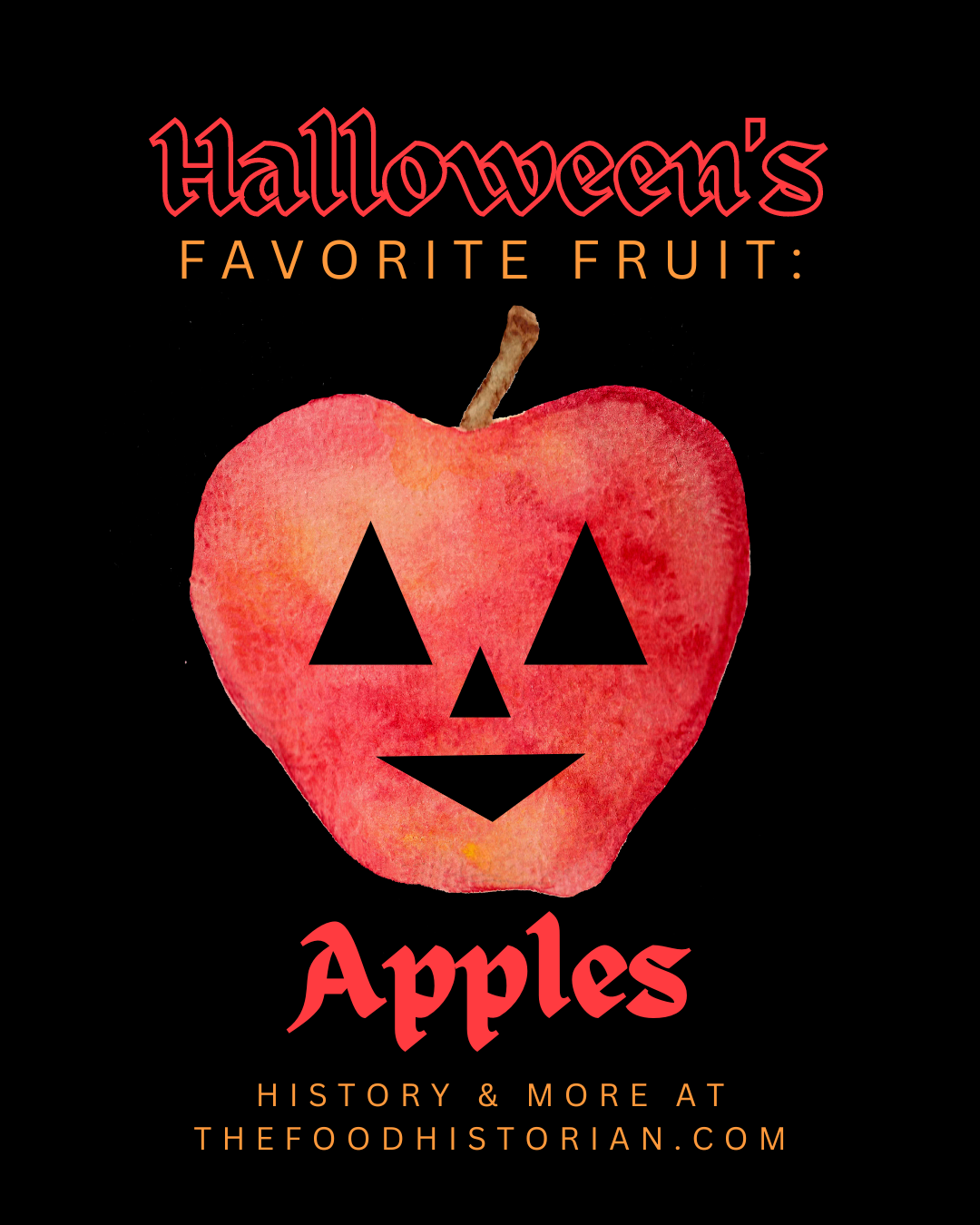
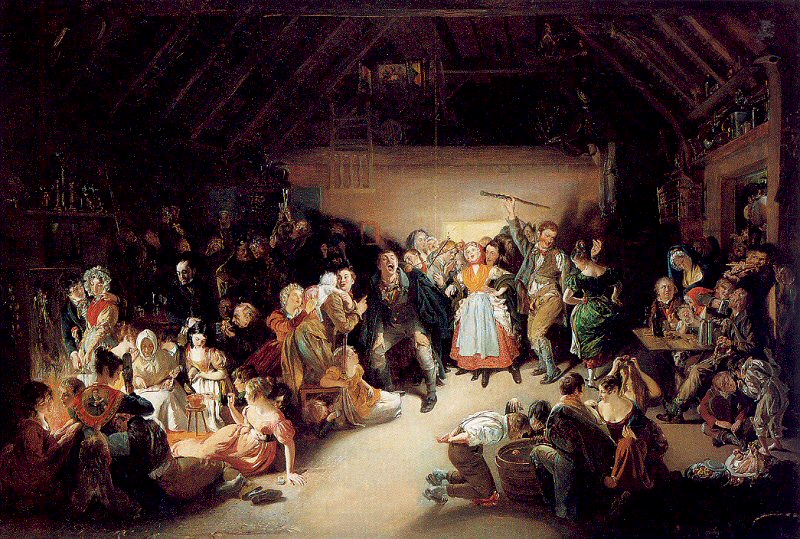
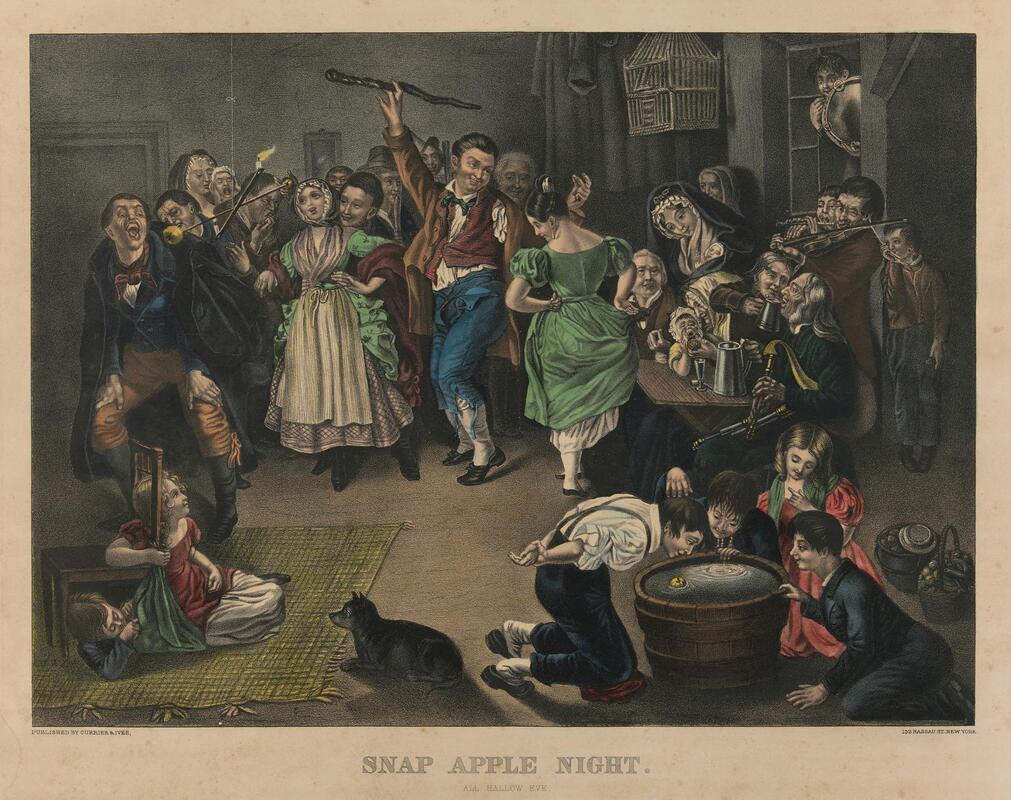
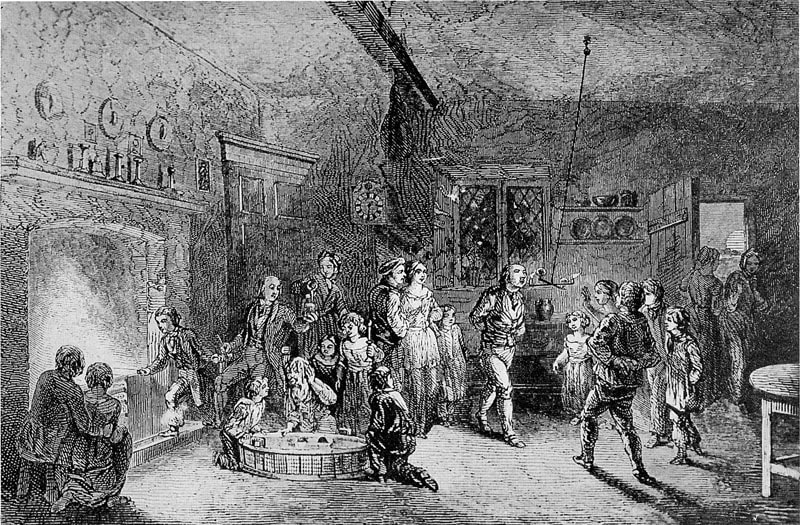
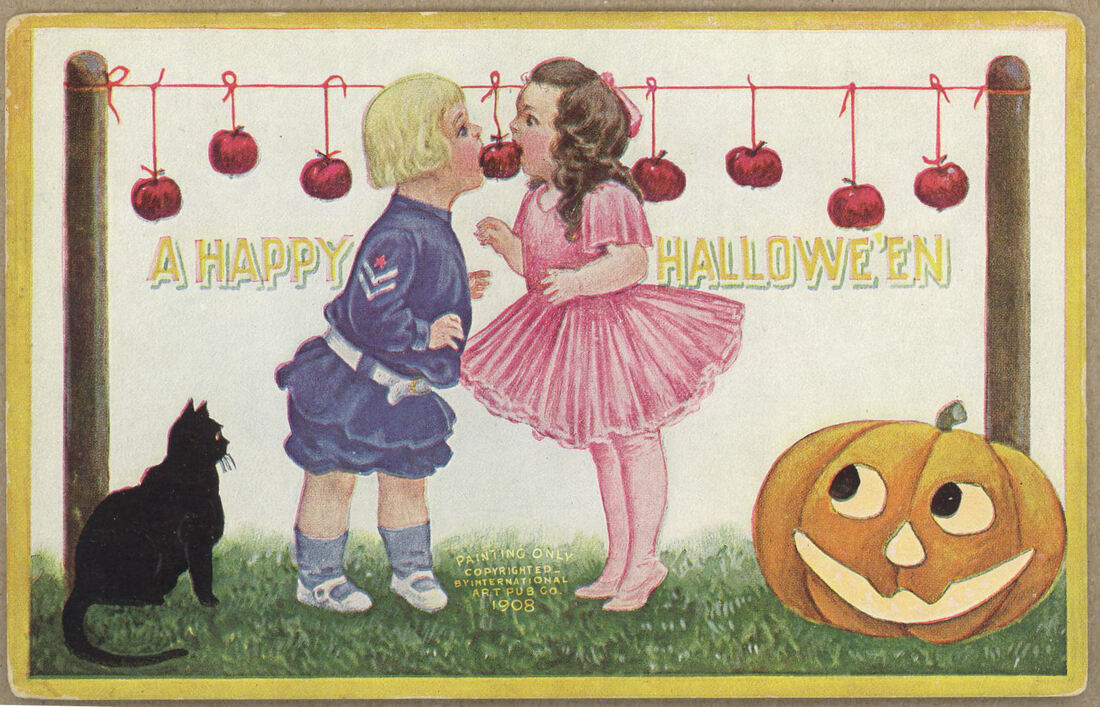
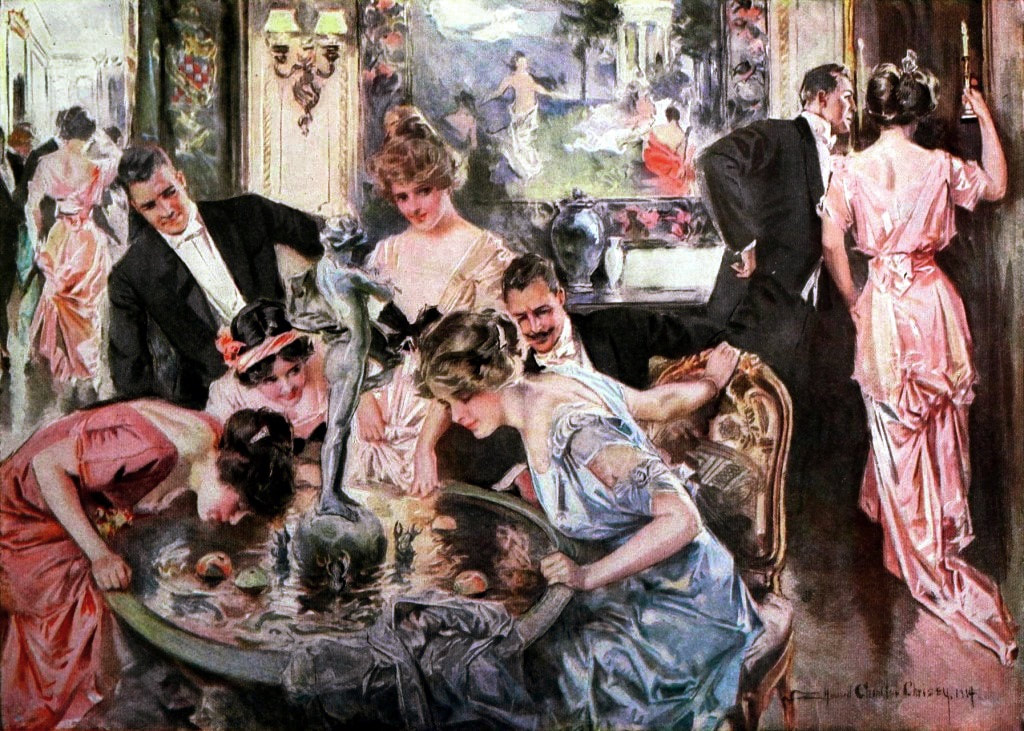
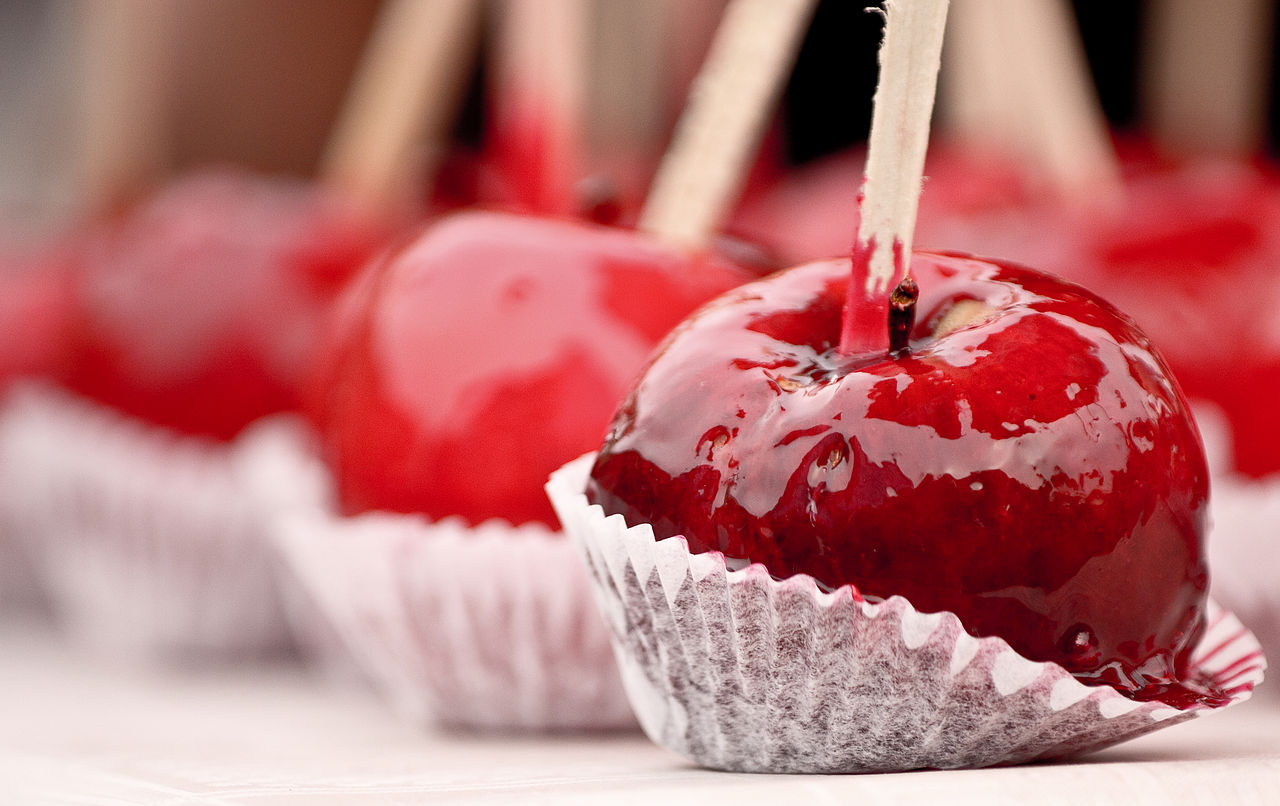
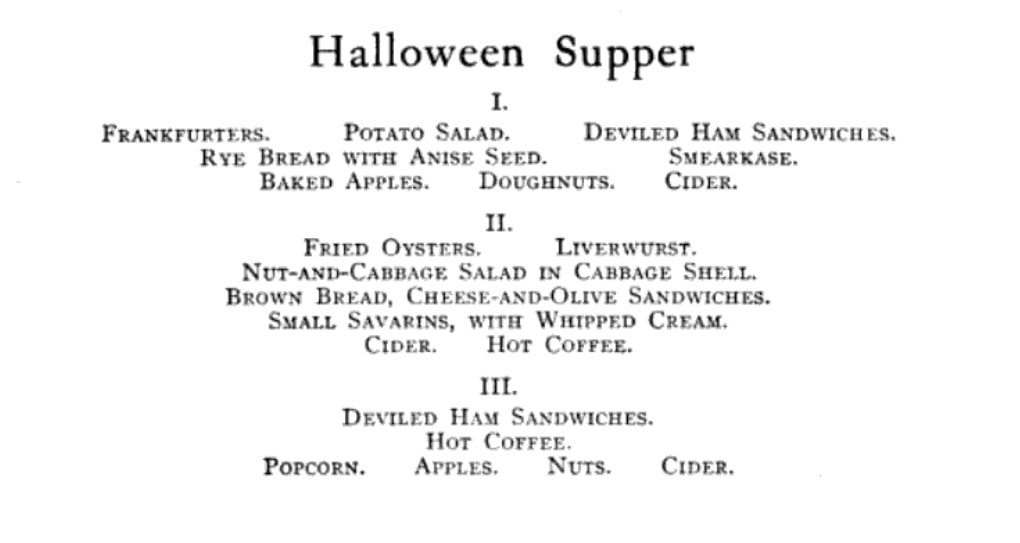
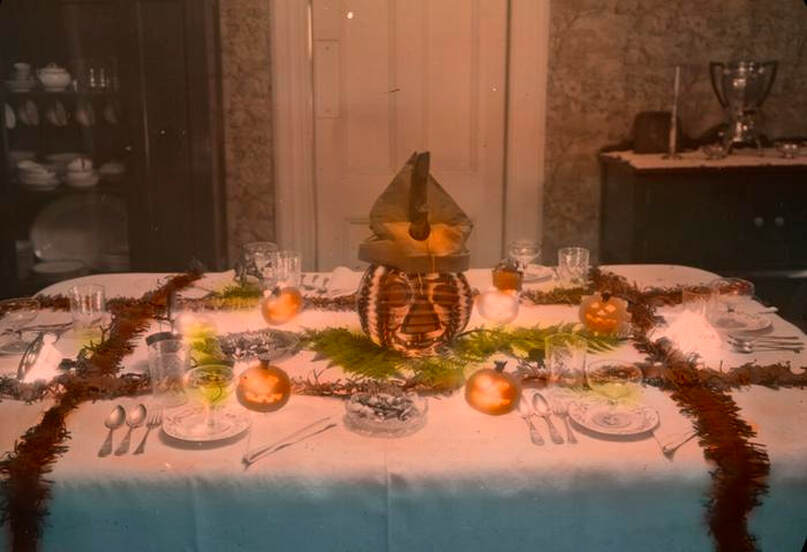
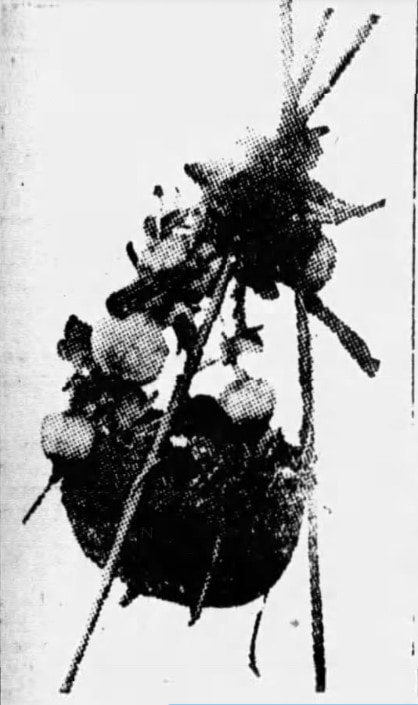

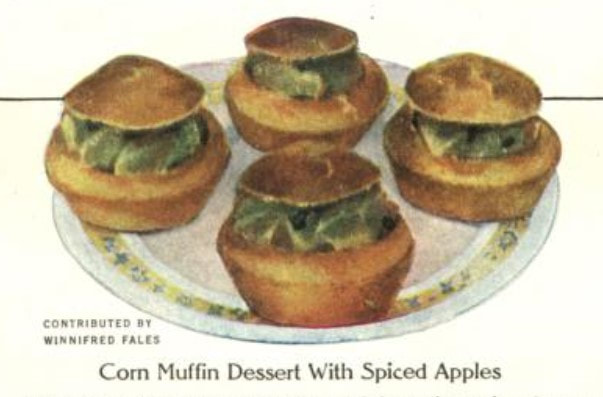
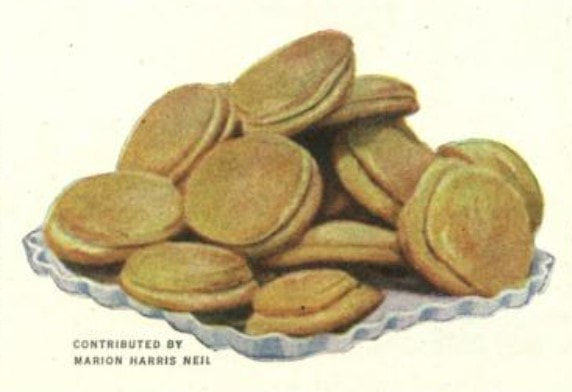
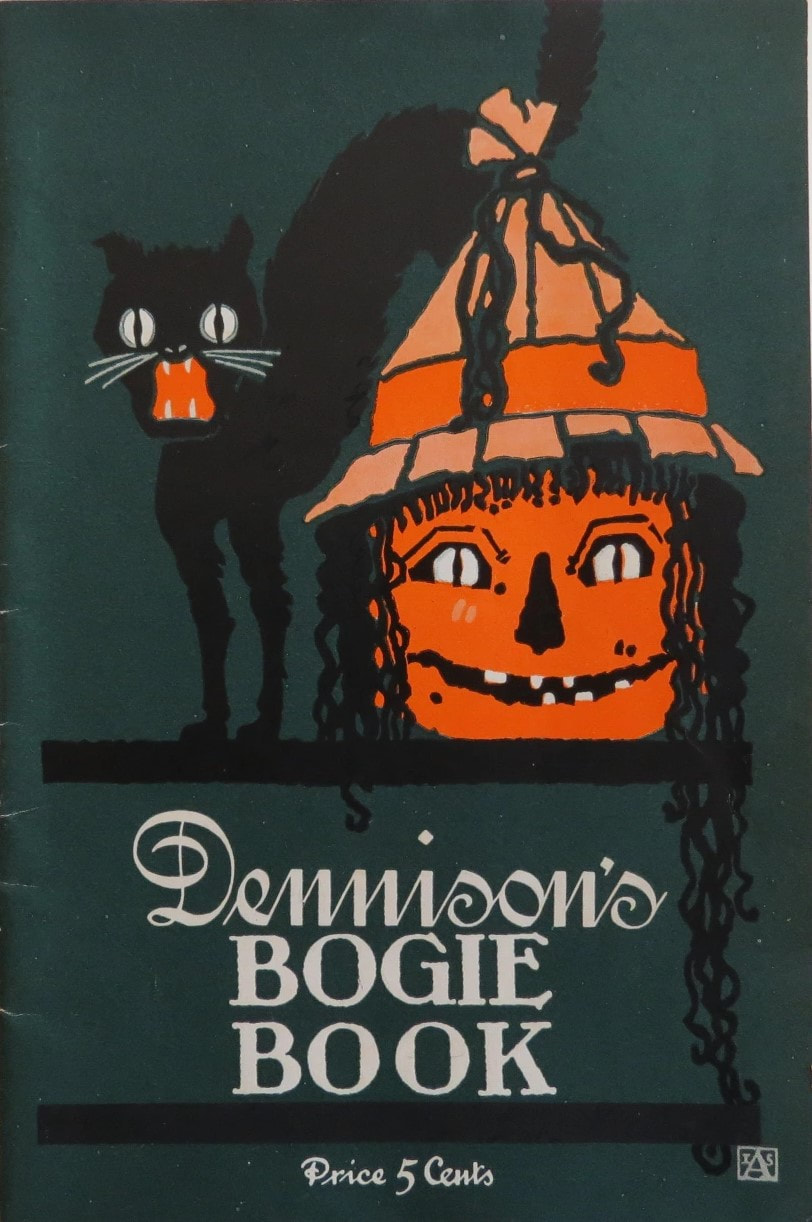
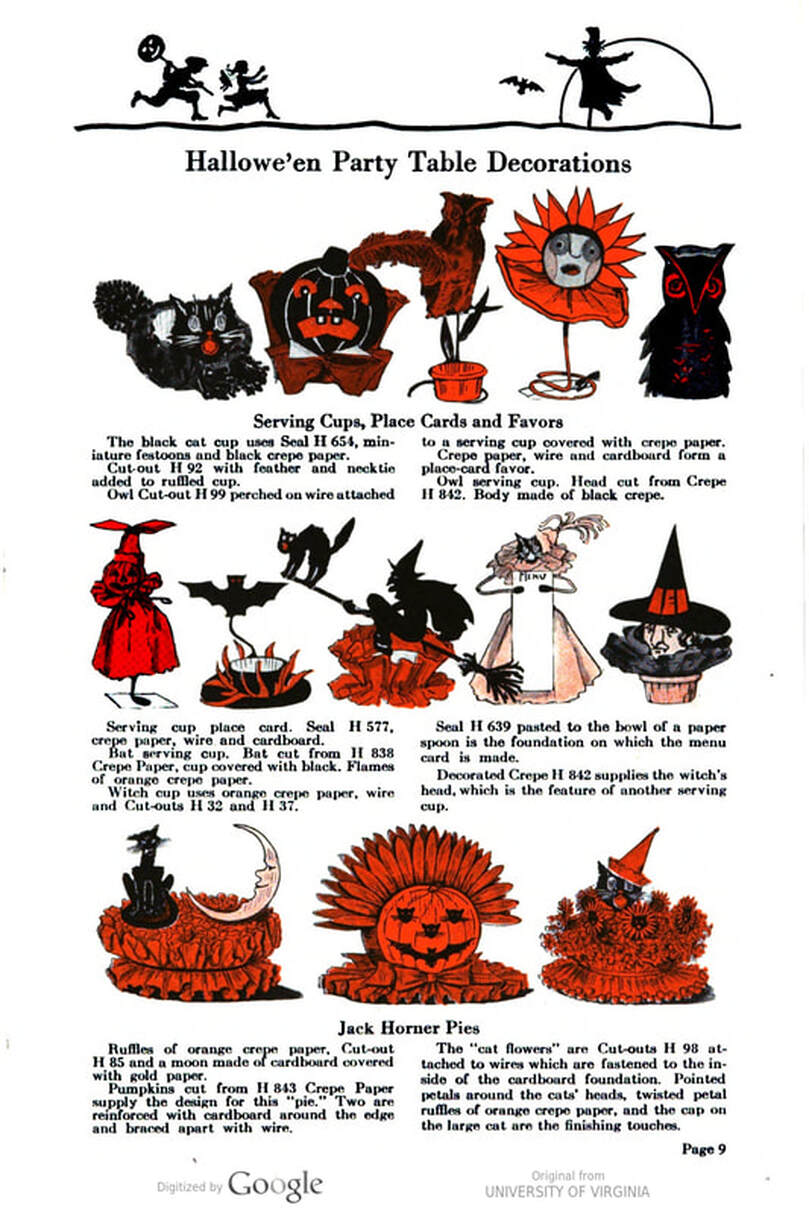
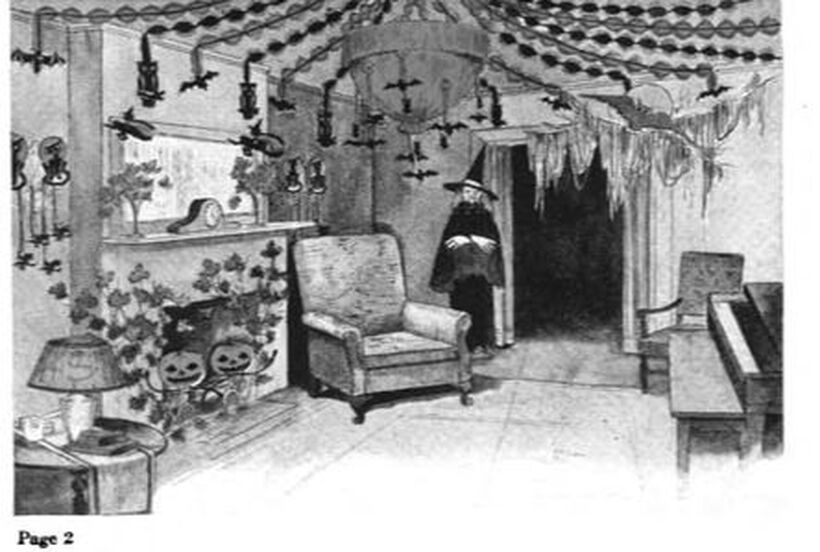
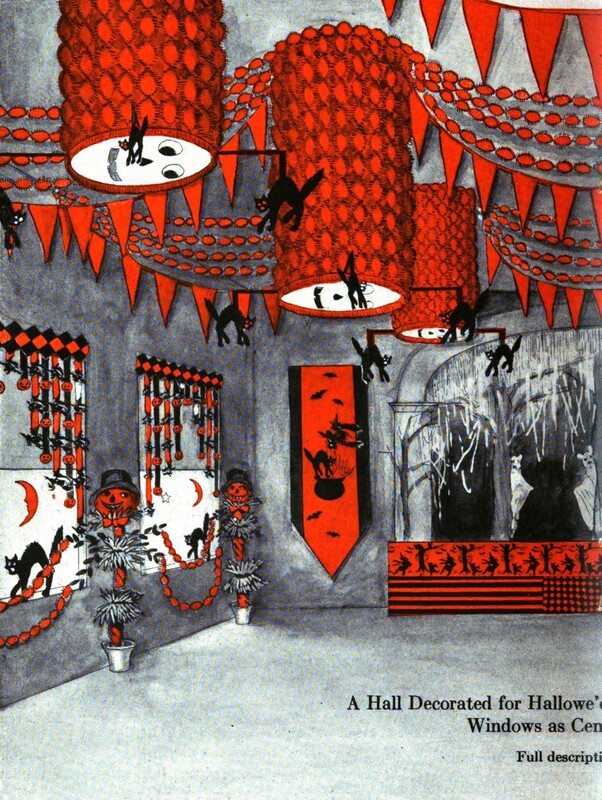
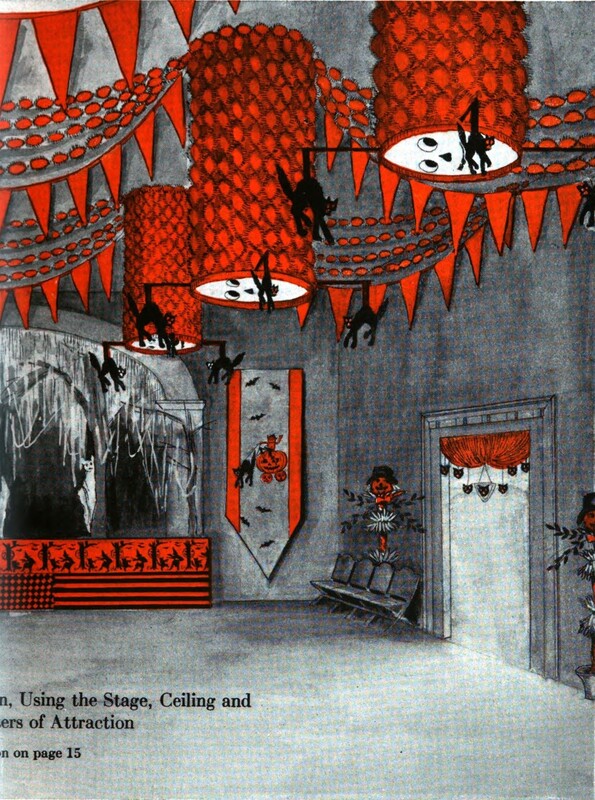
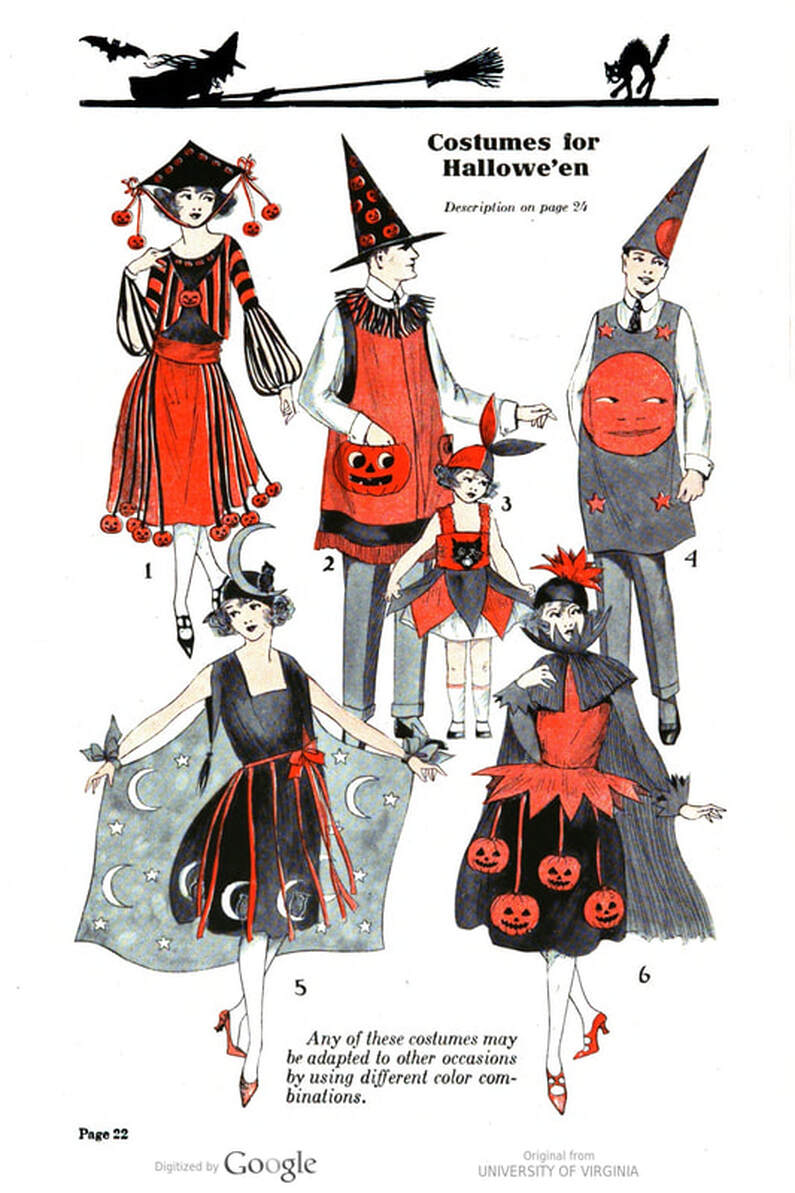
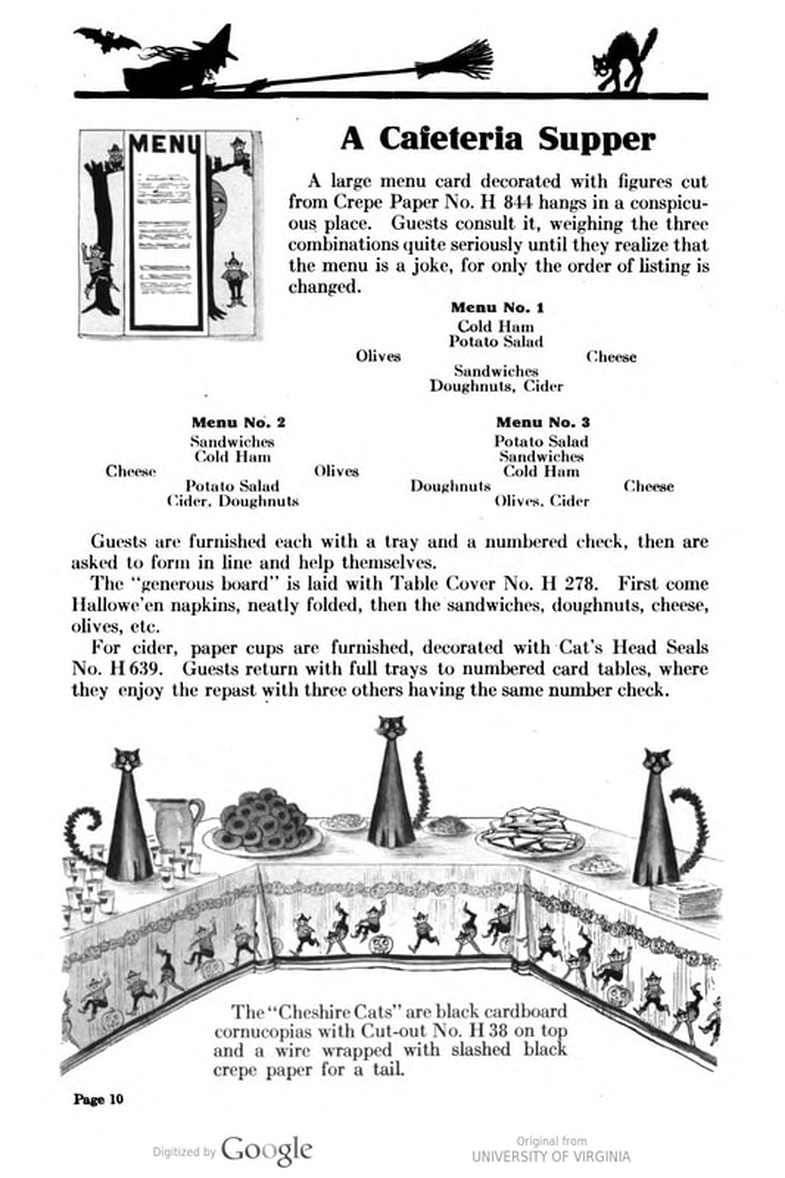
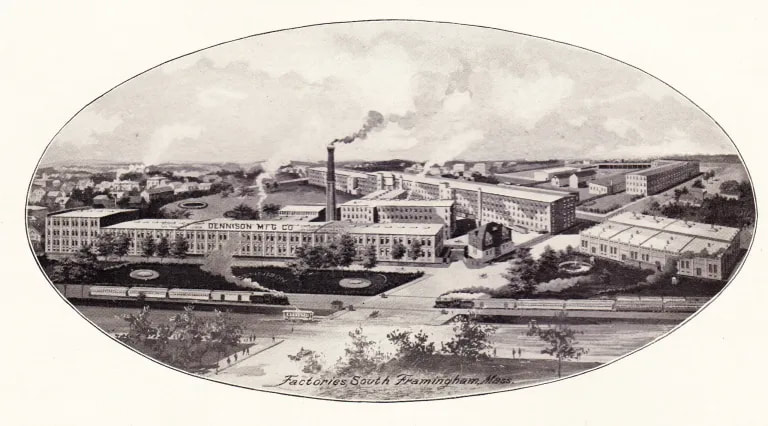
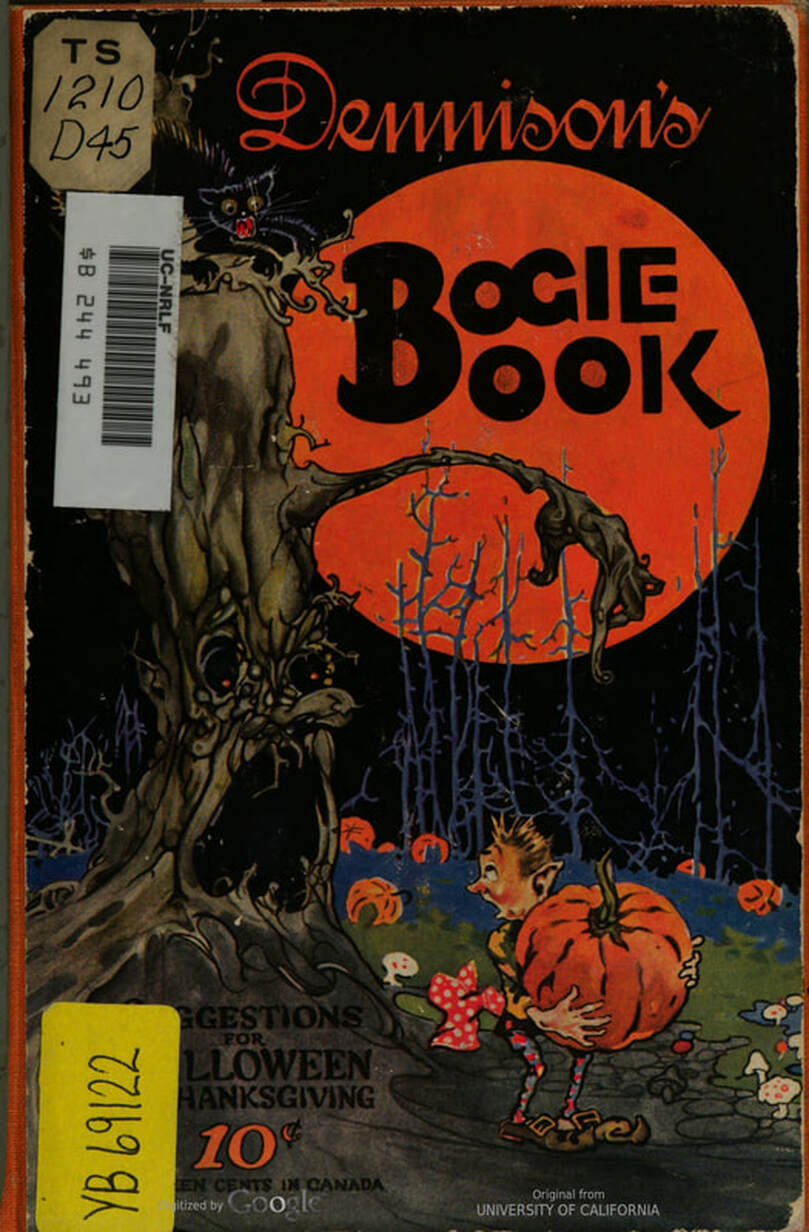

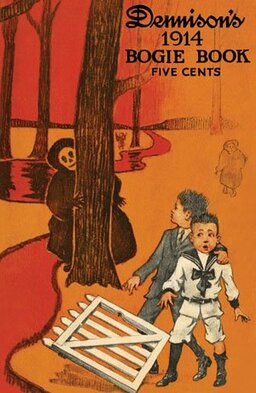
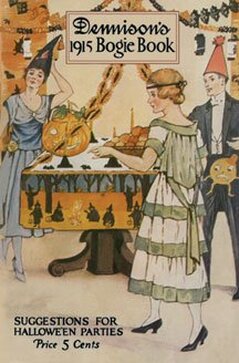
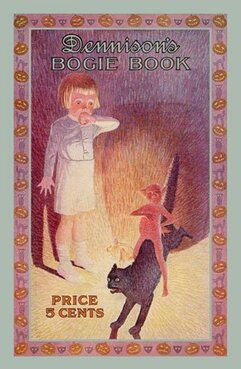
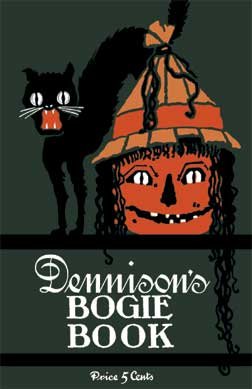
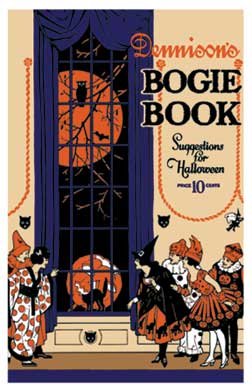
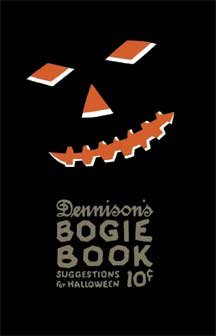

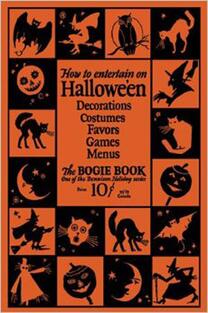
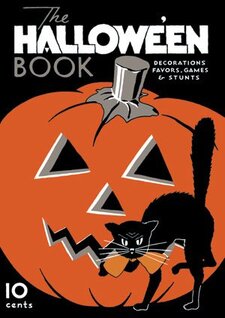
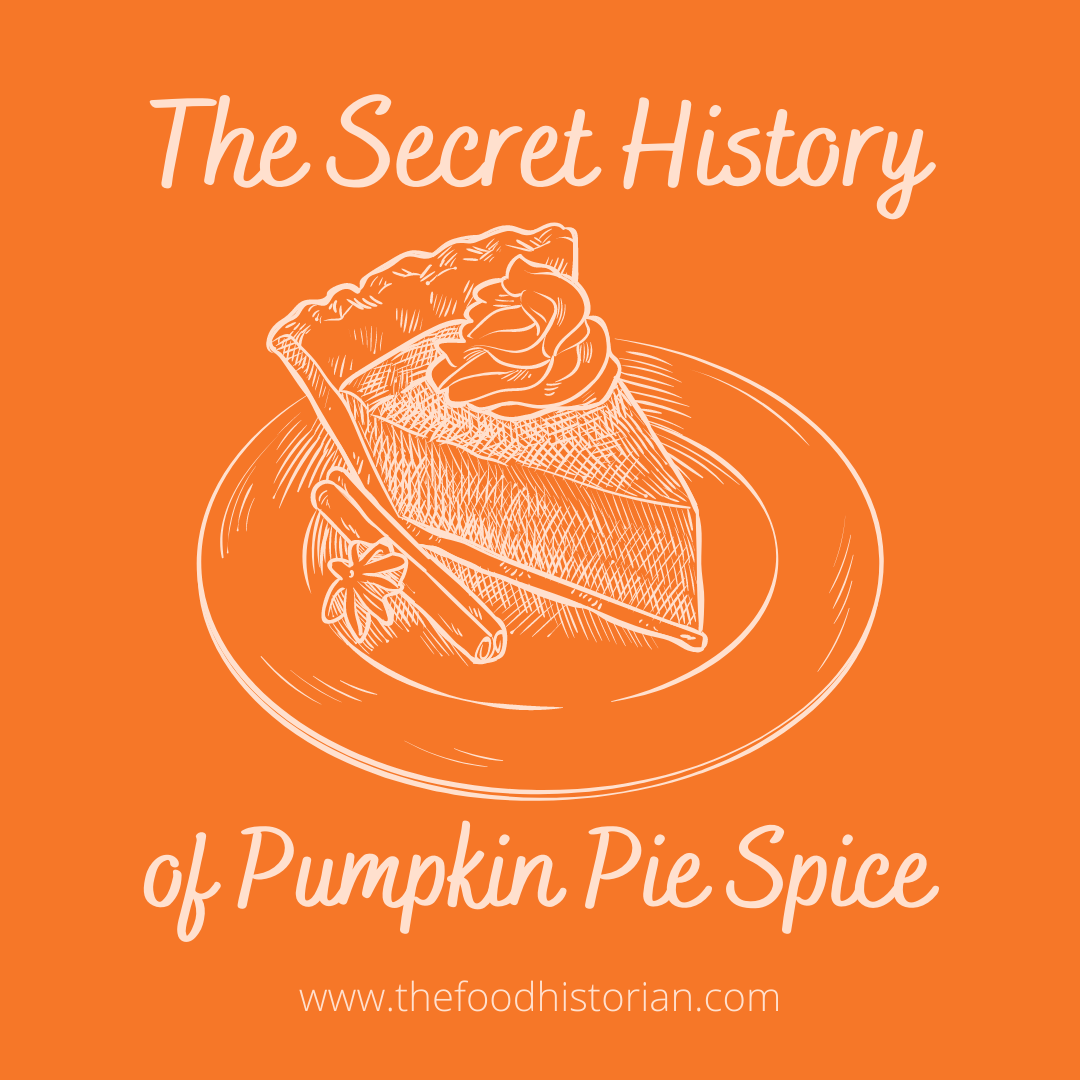
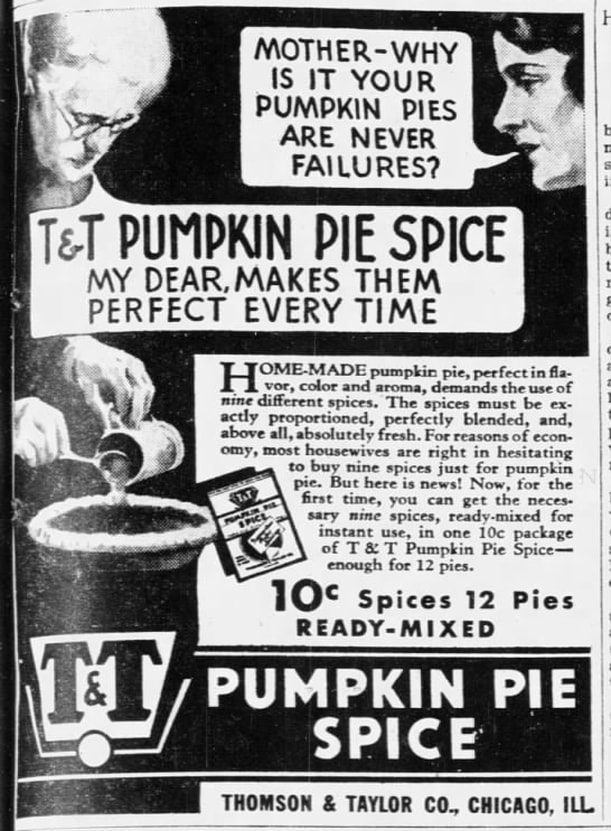
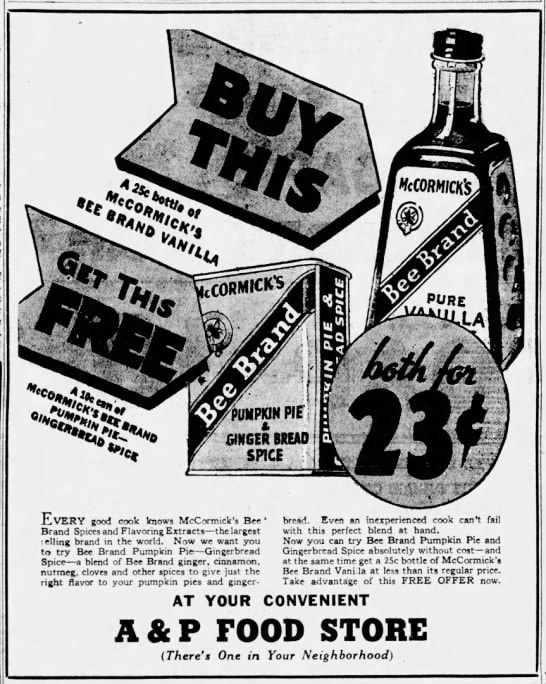
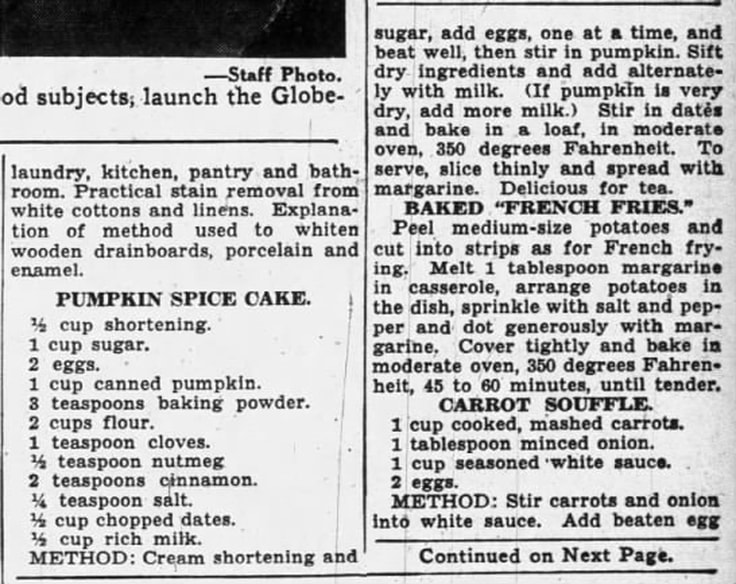
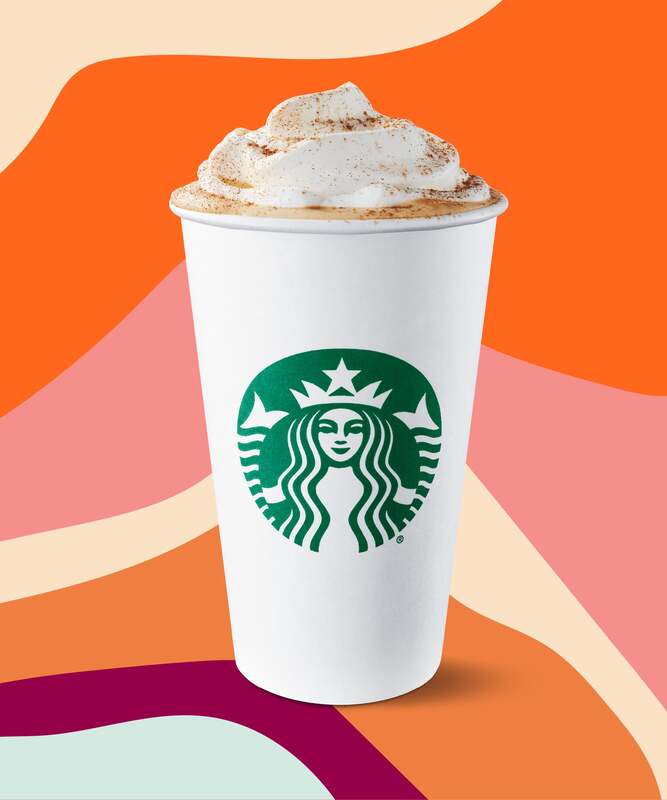
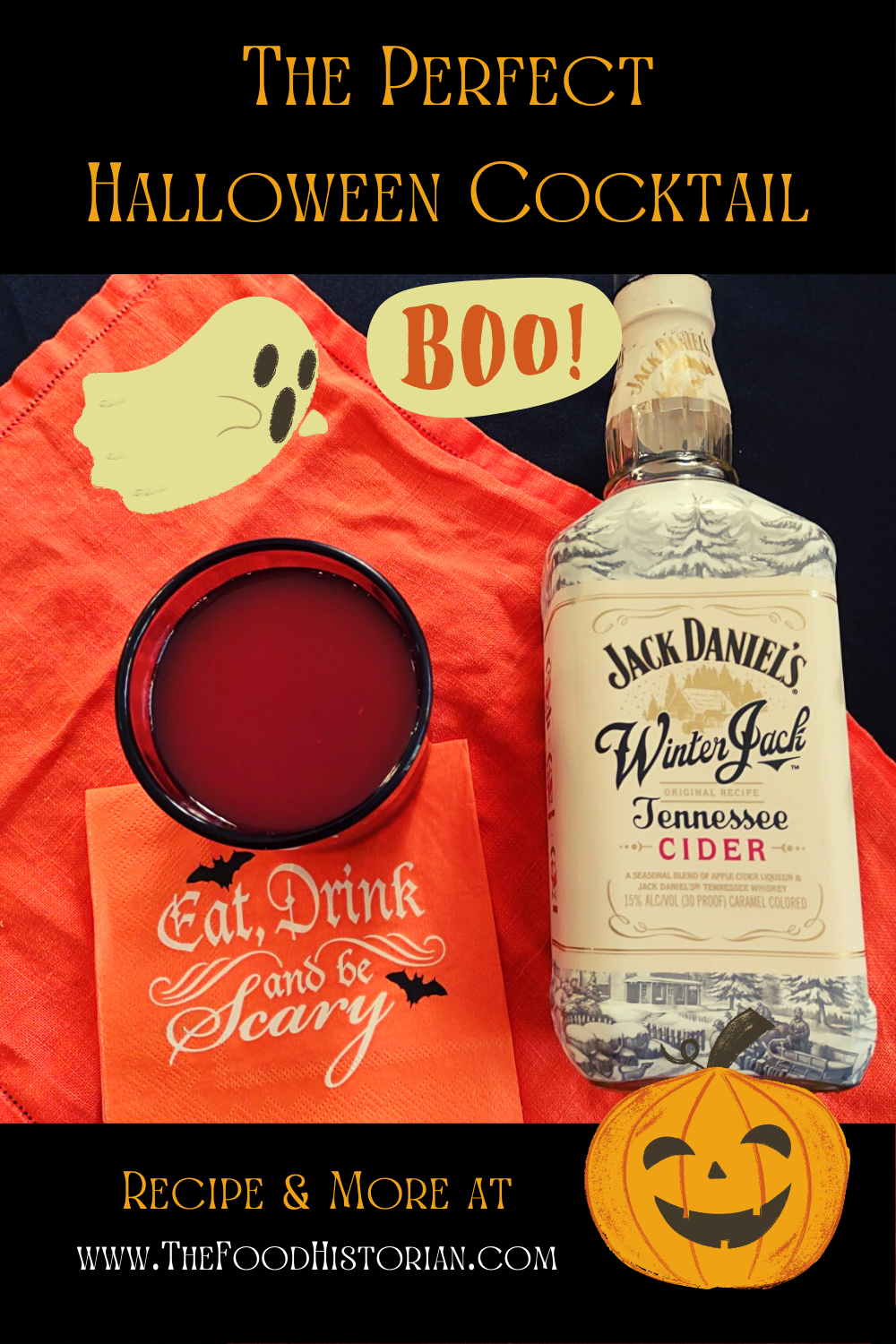
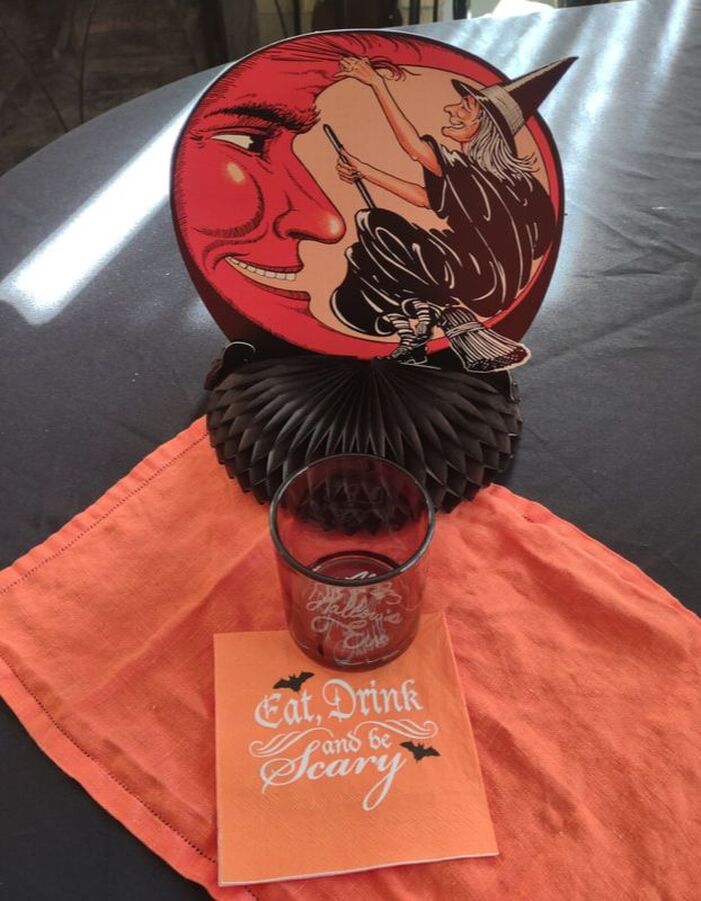
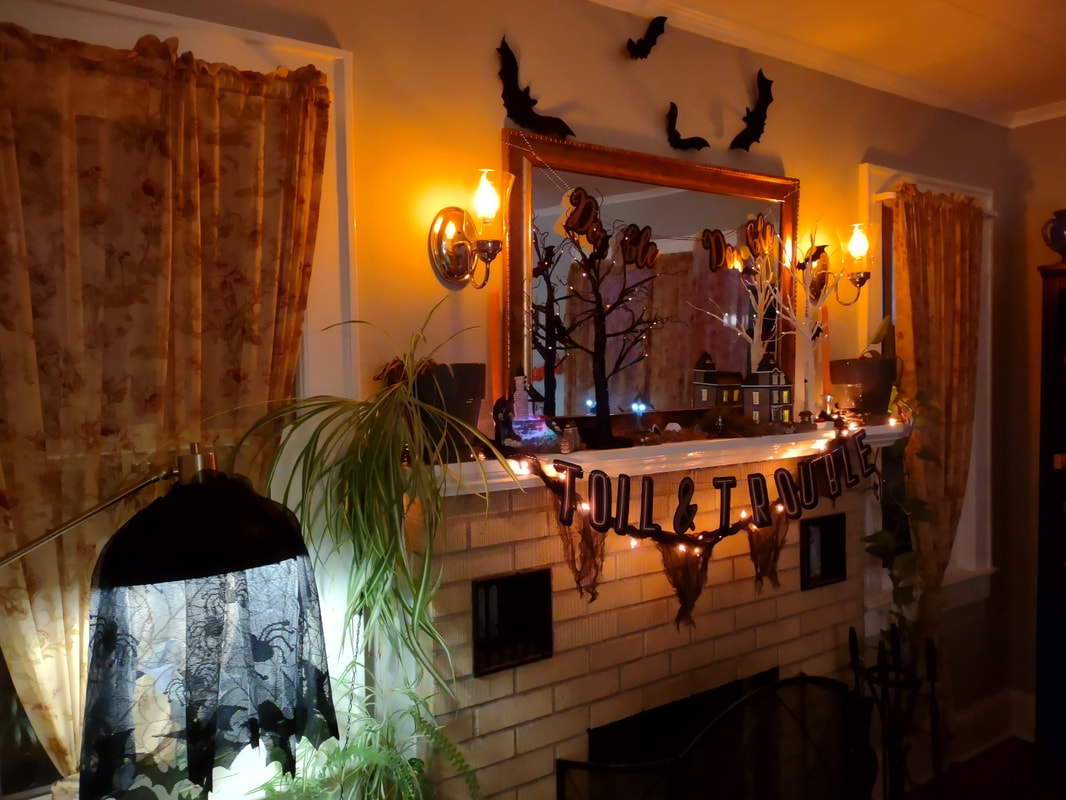
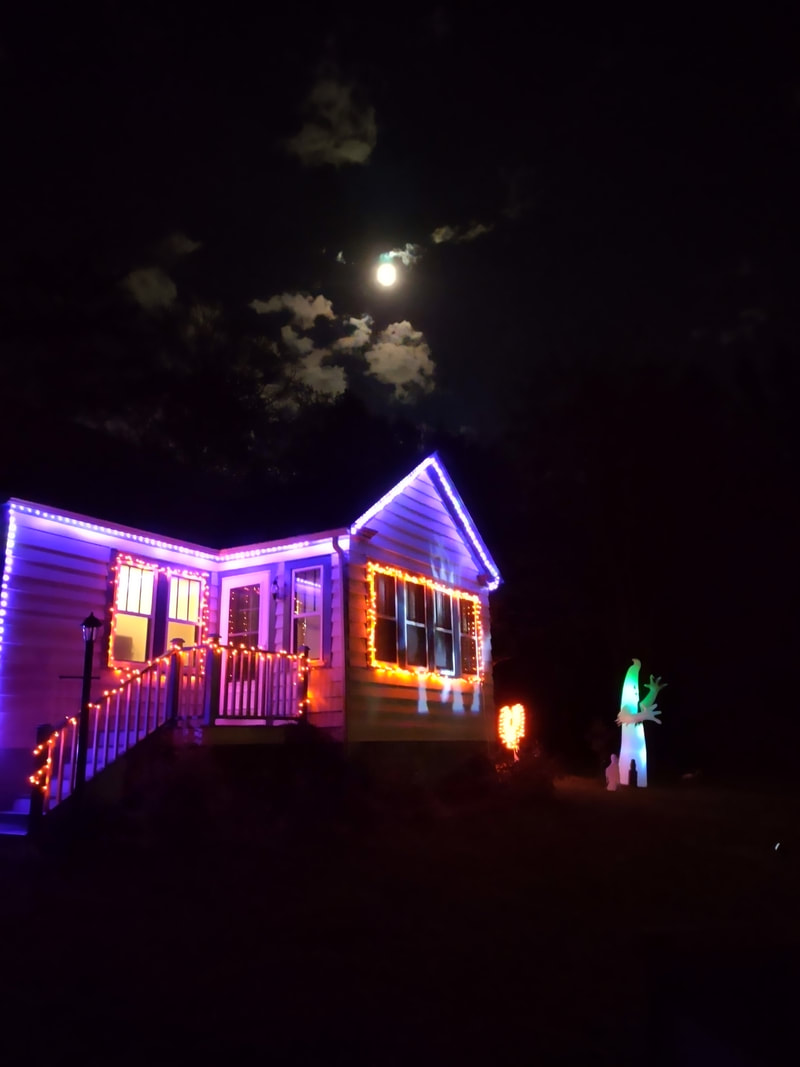

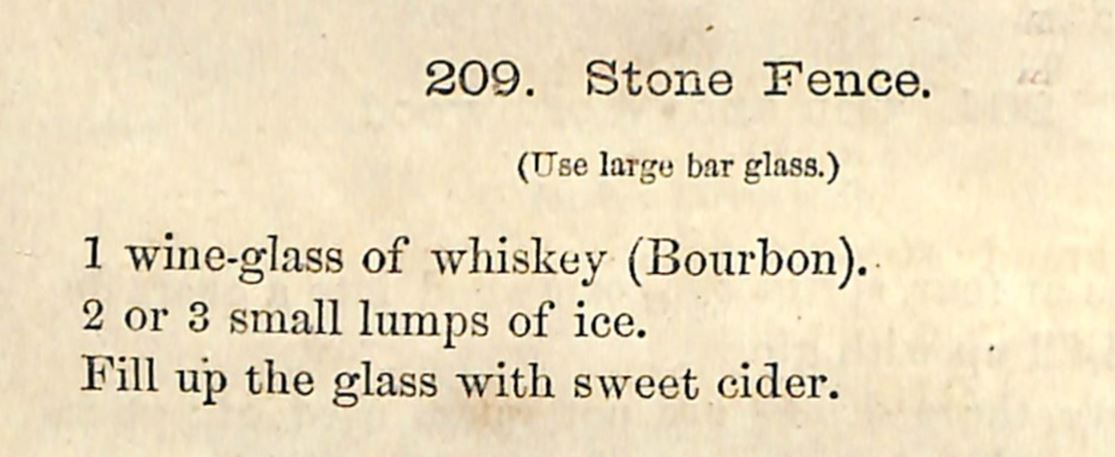

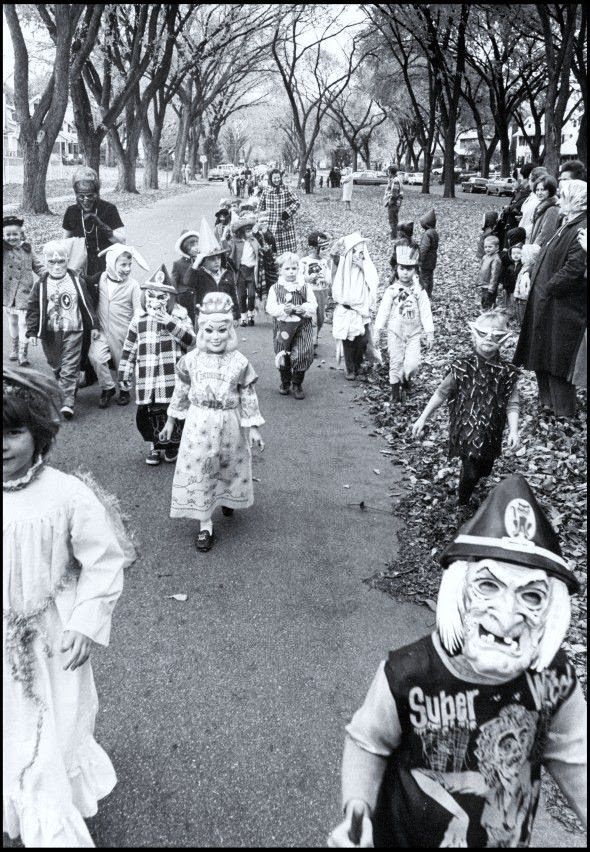
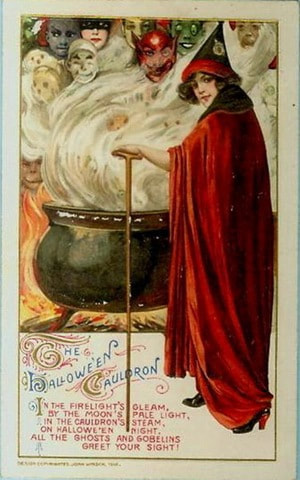

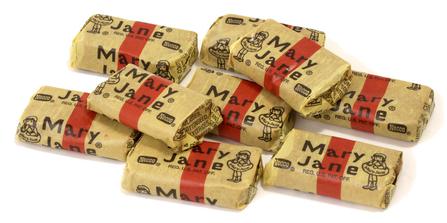
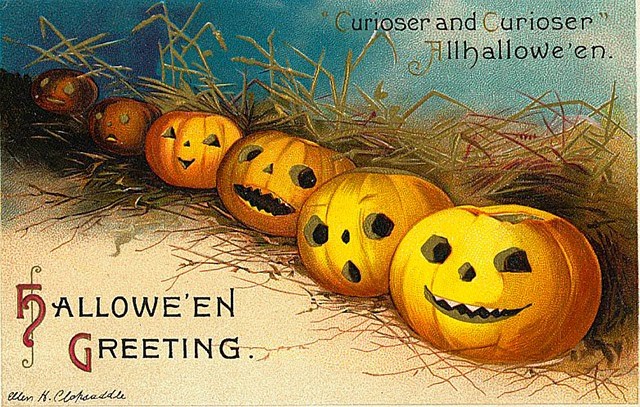
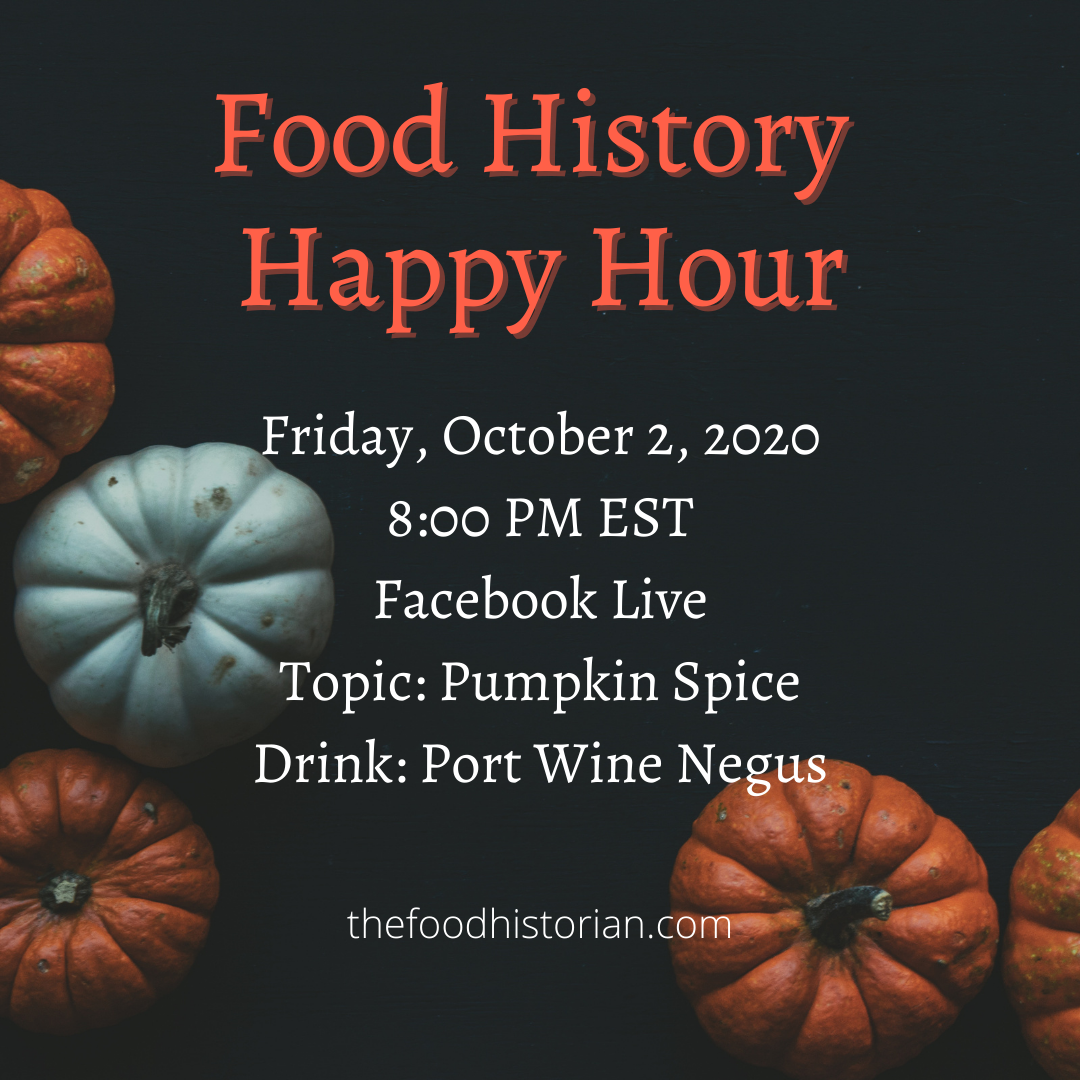
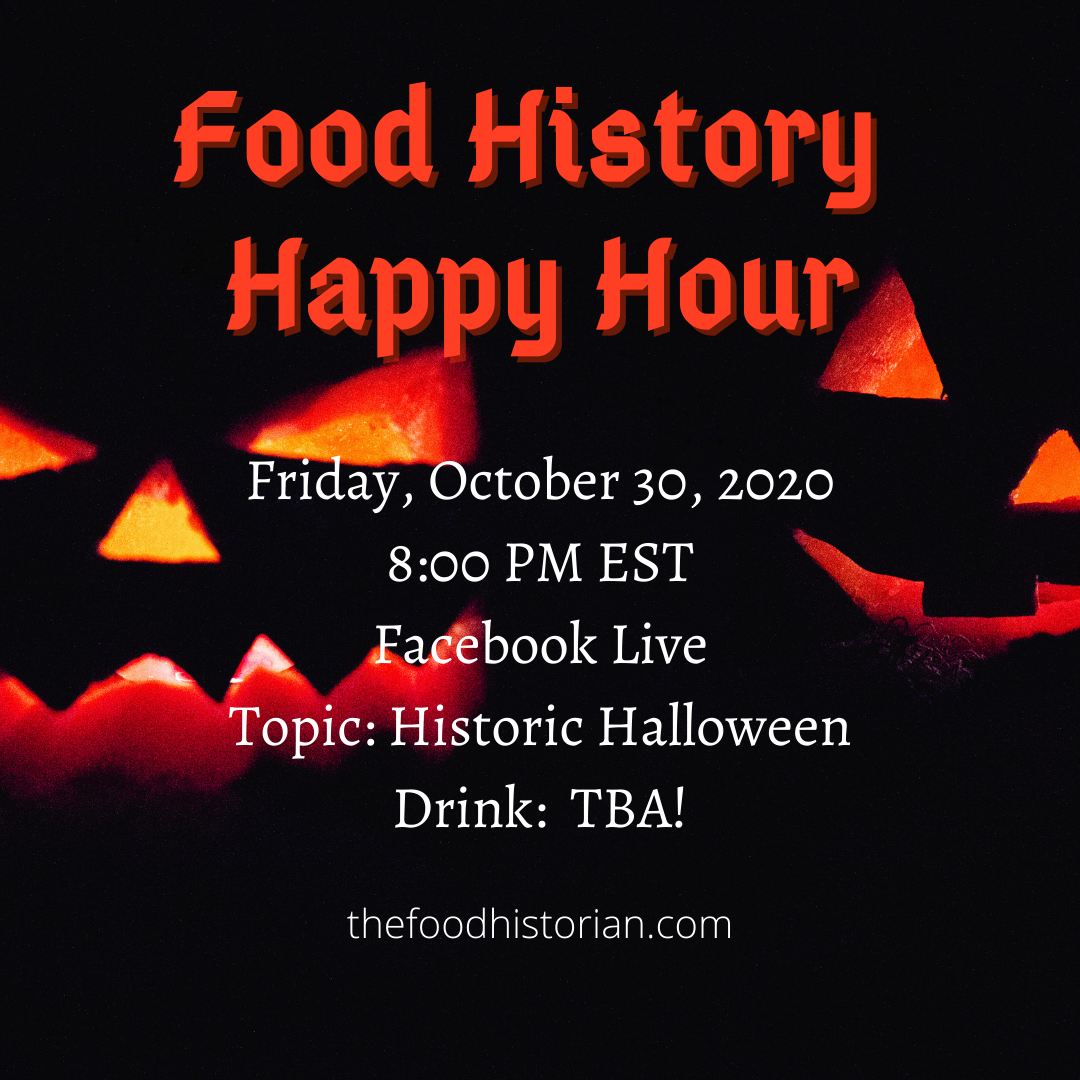
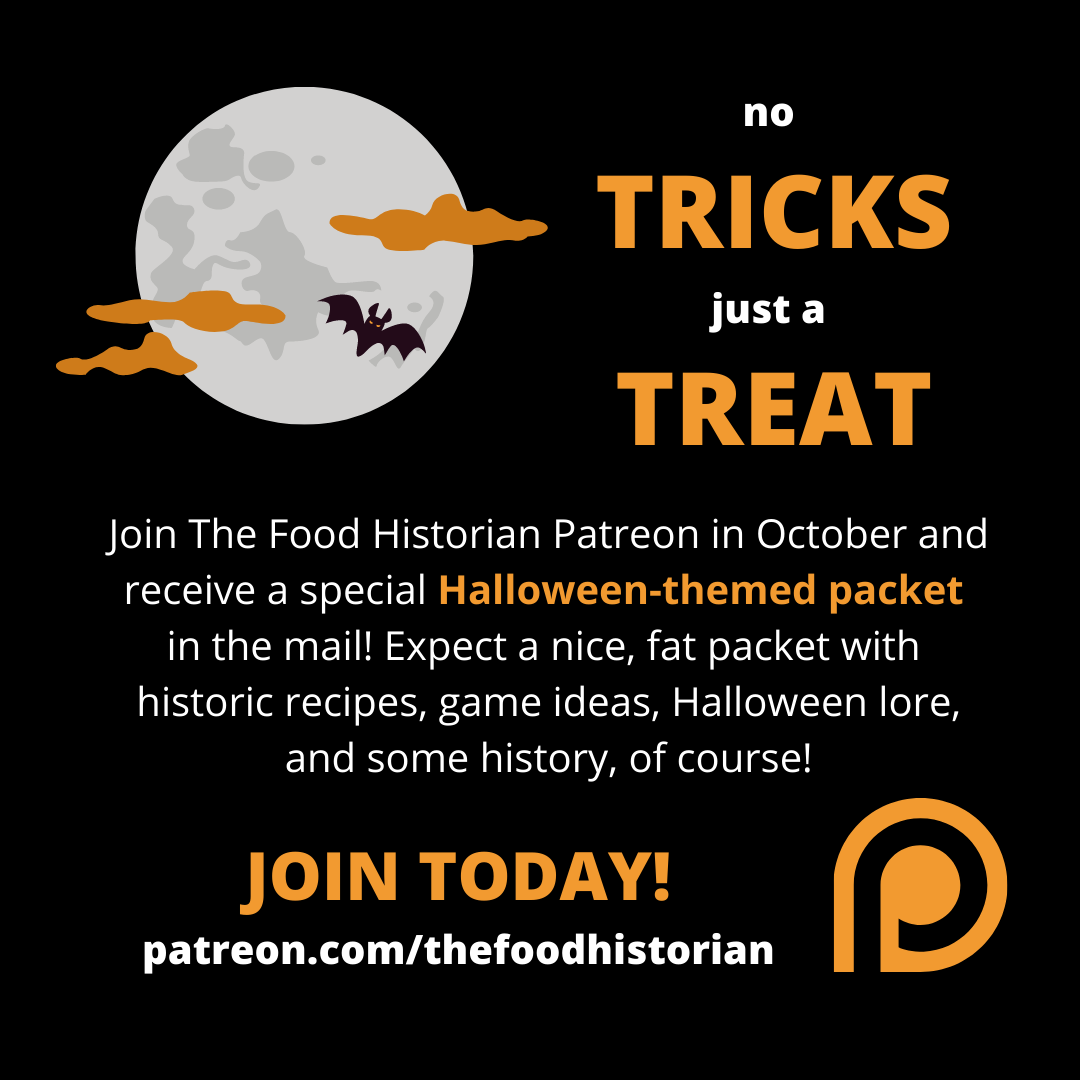

 RSS Feed
RSS Feed